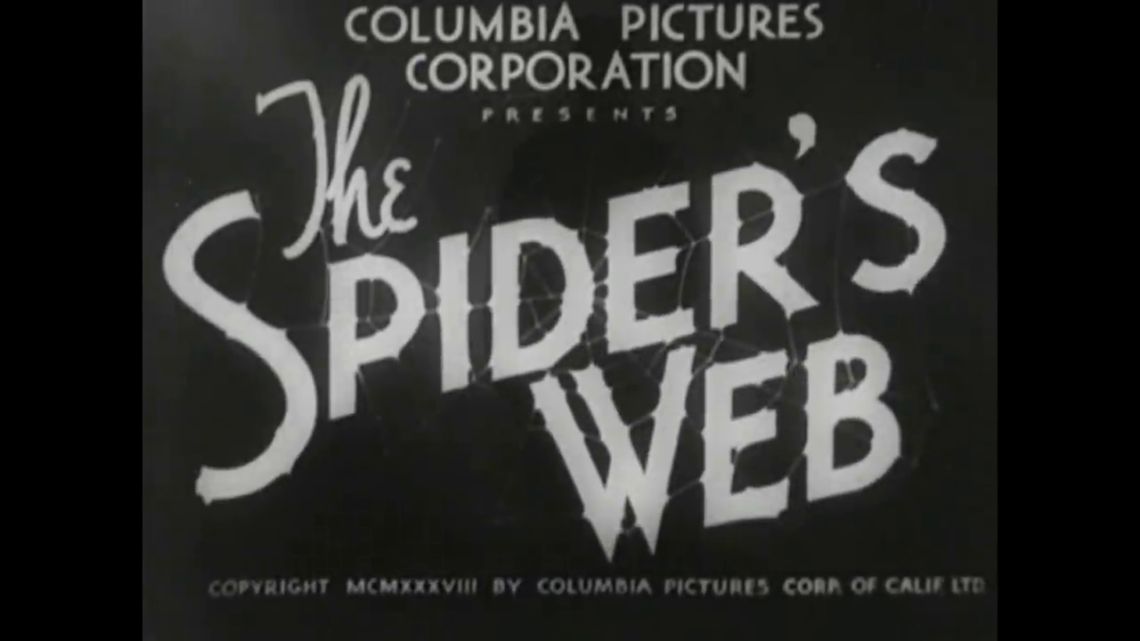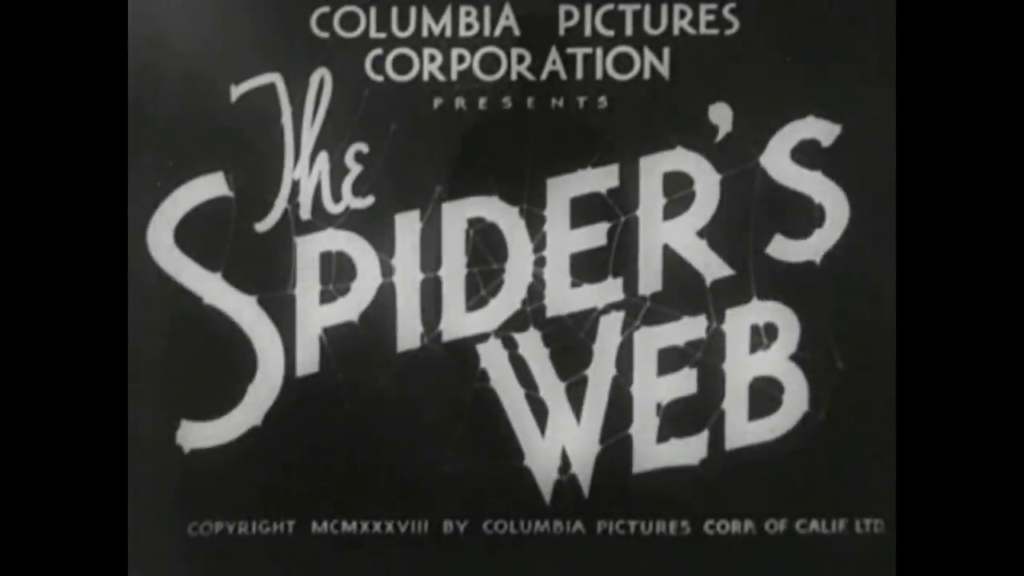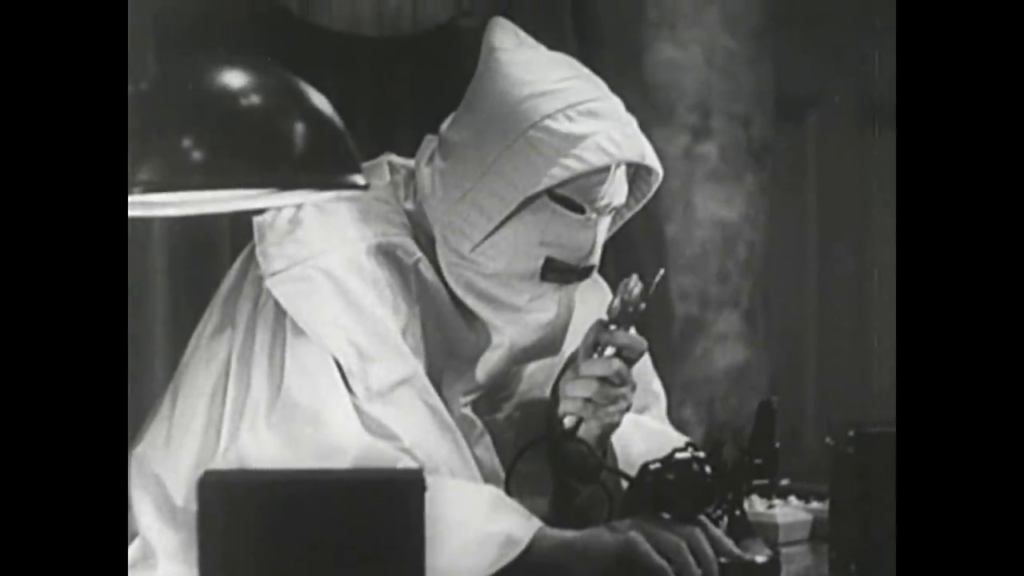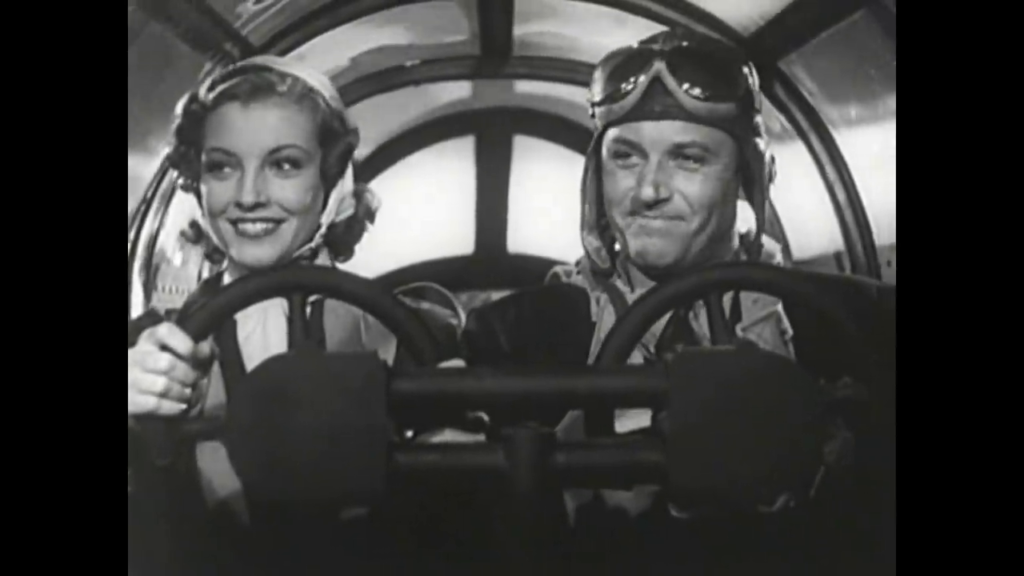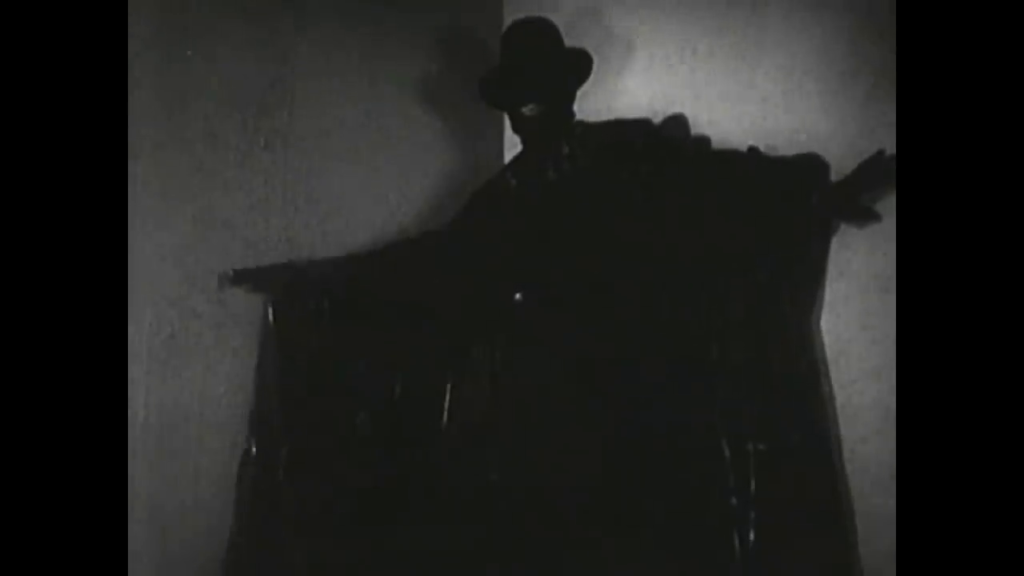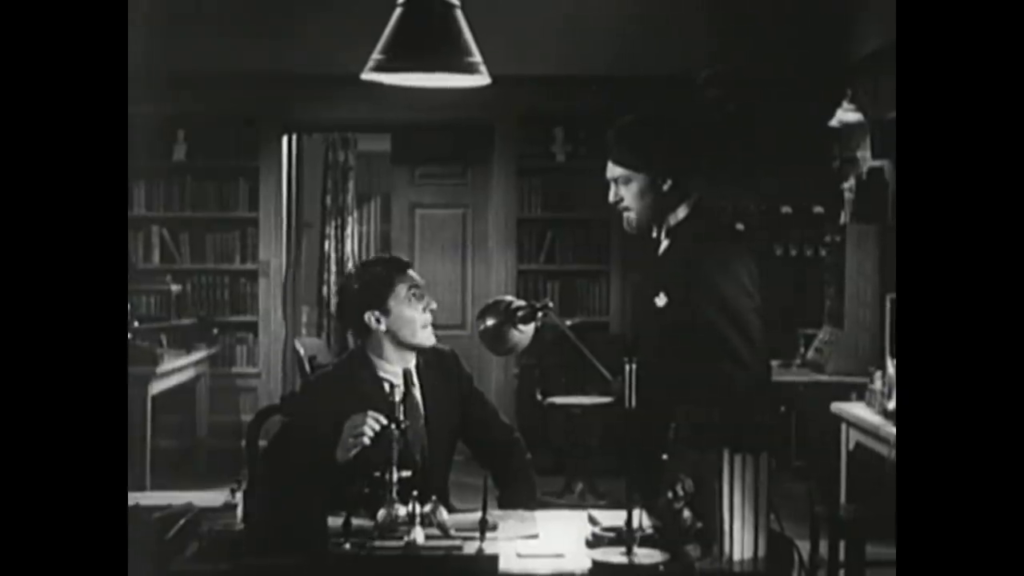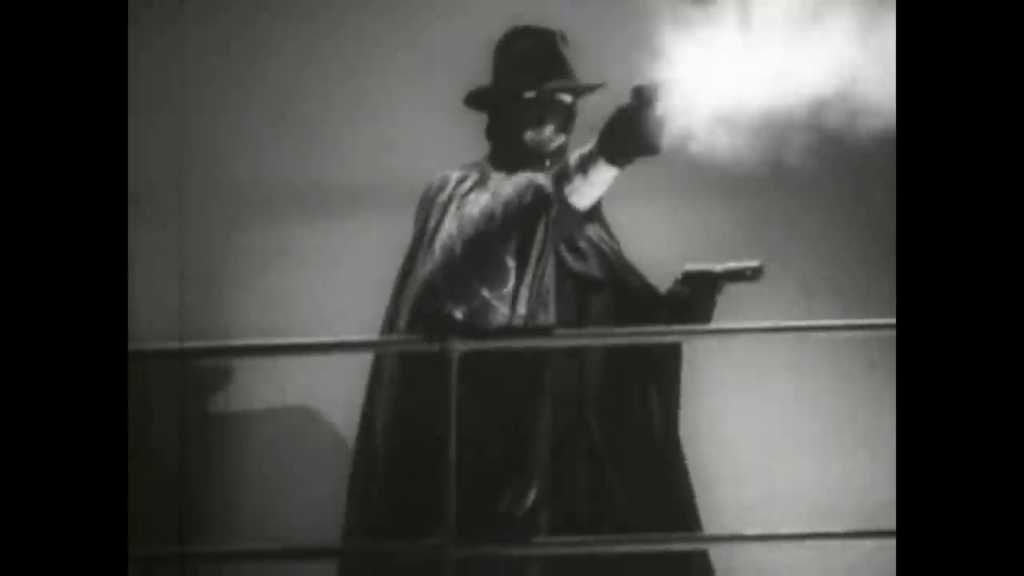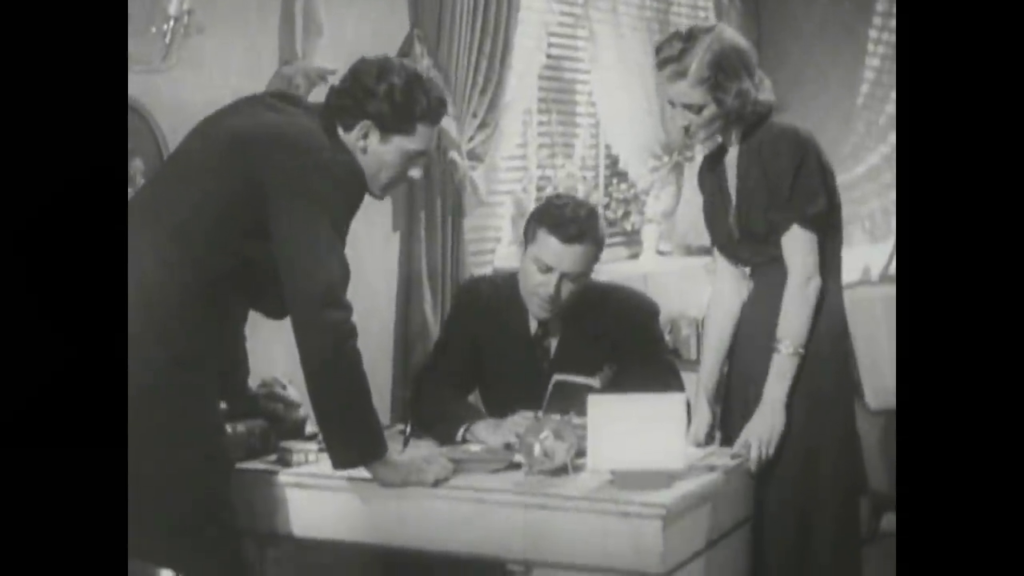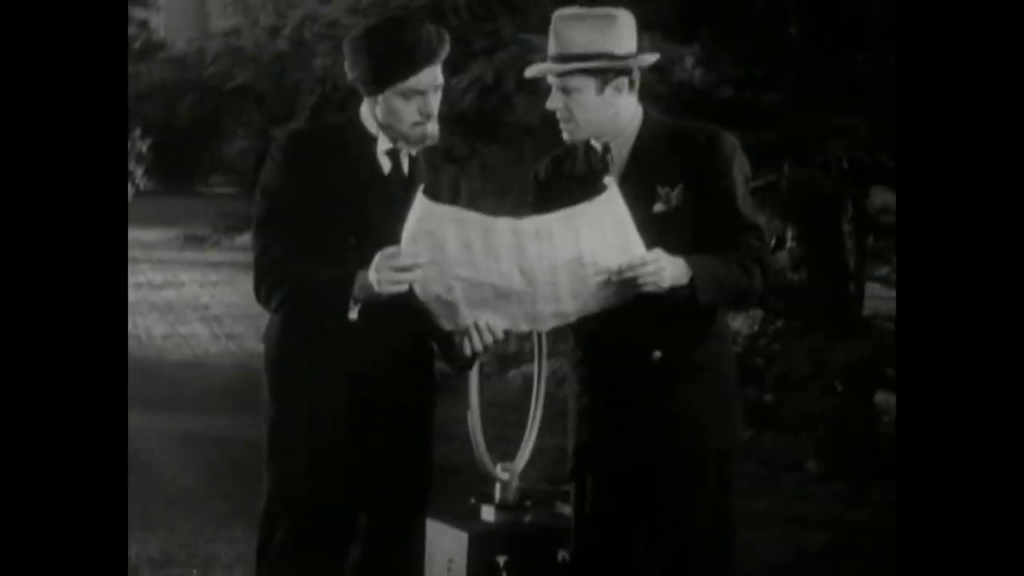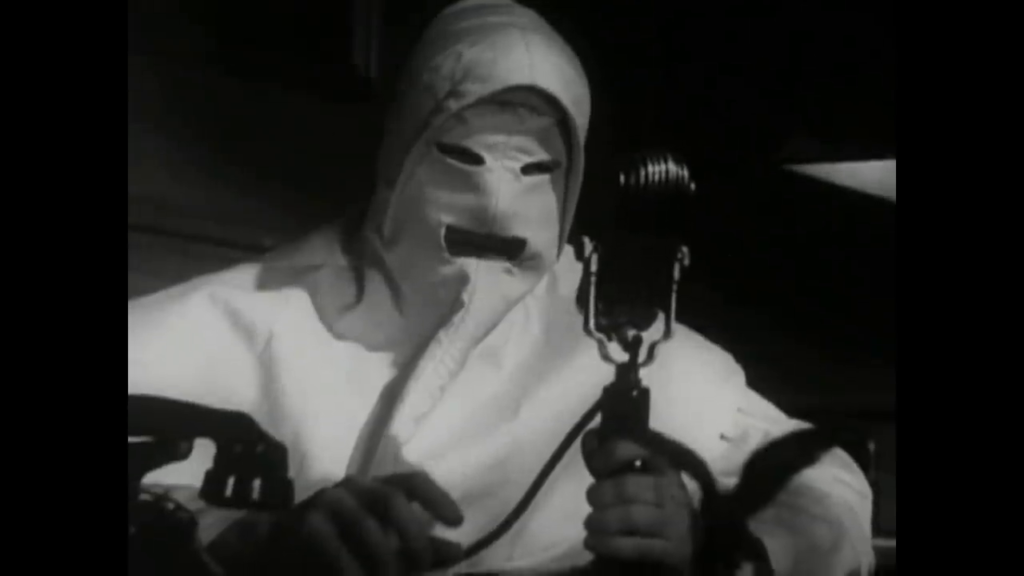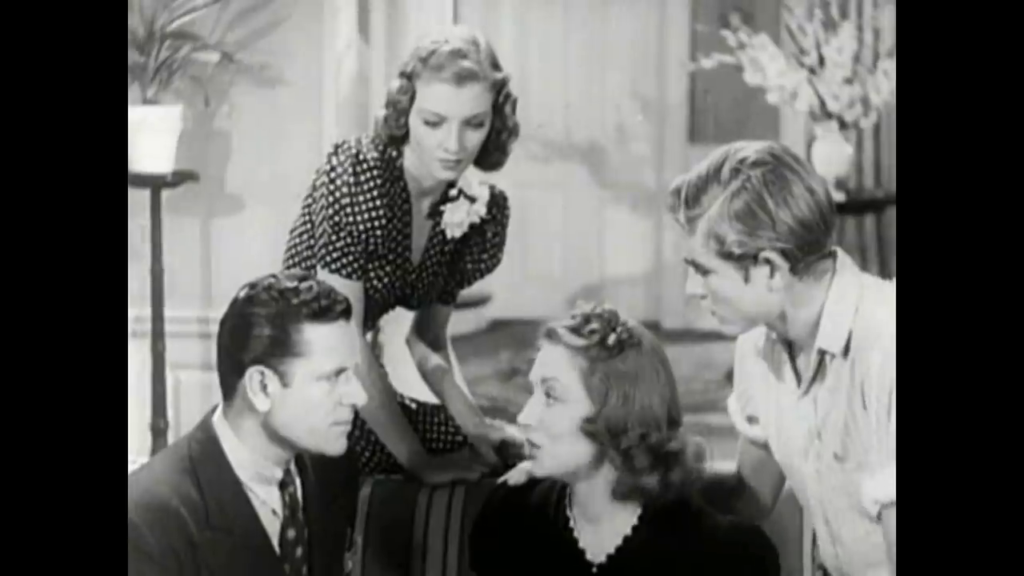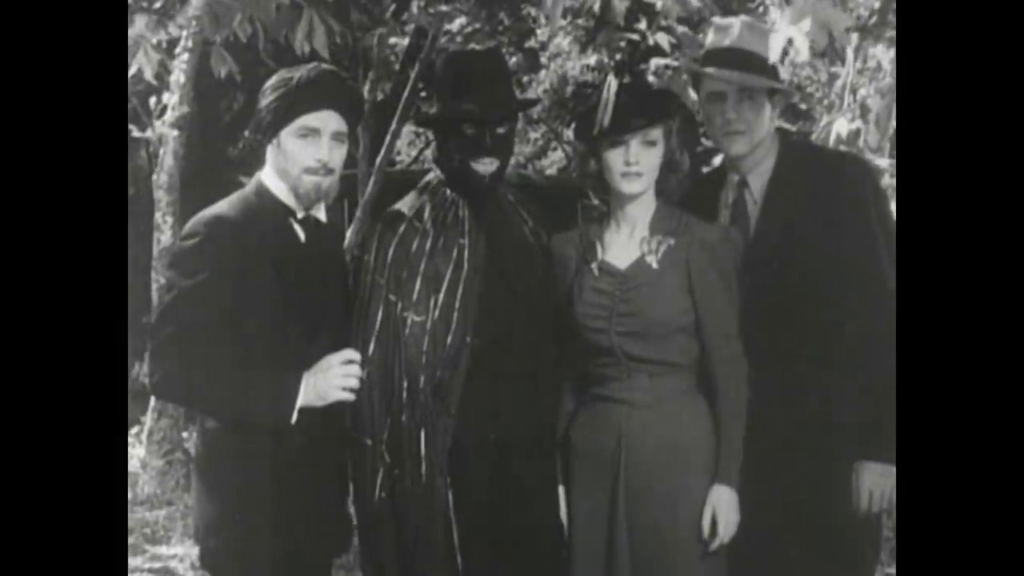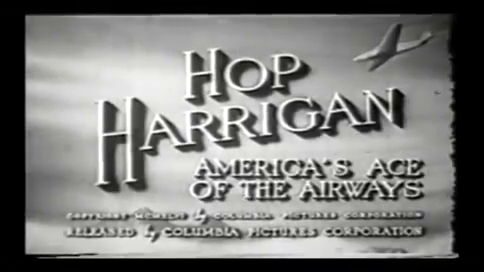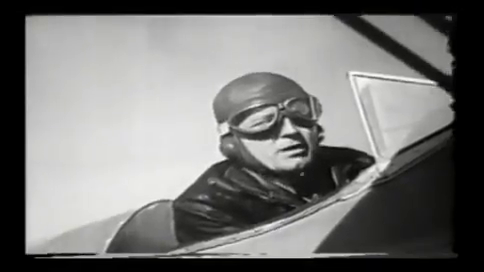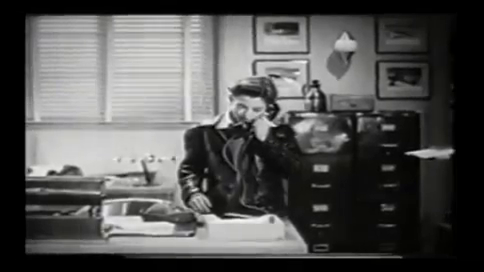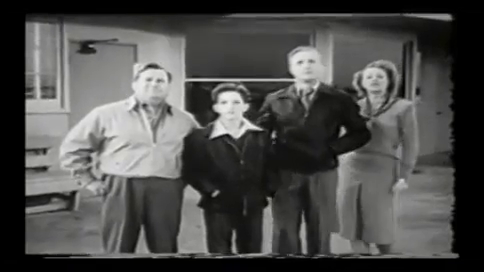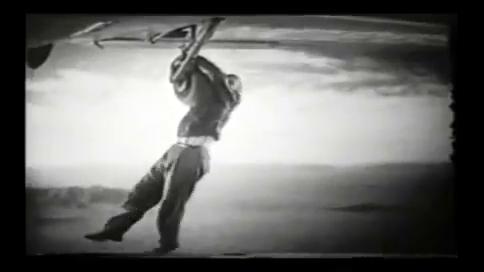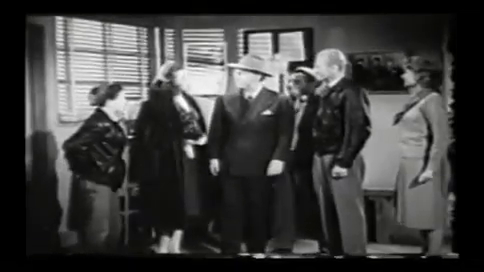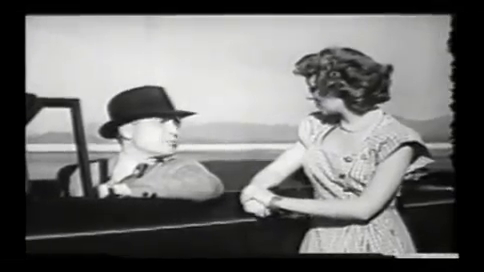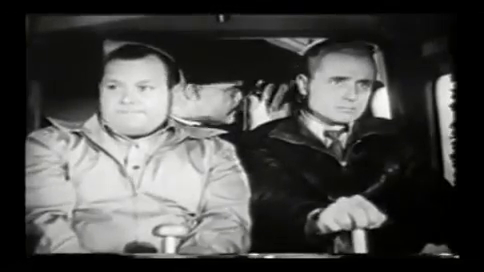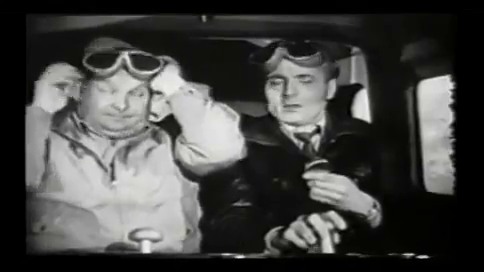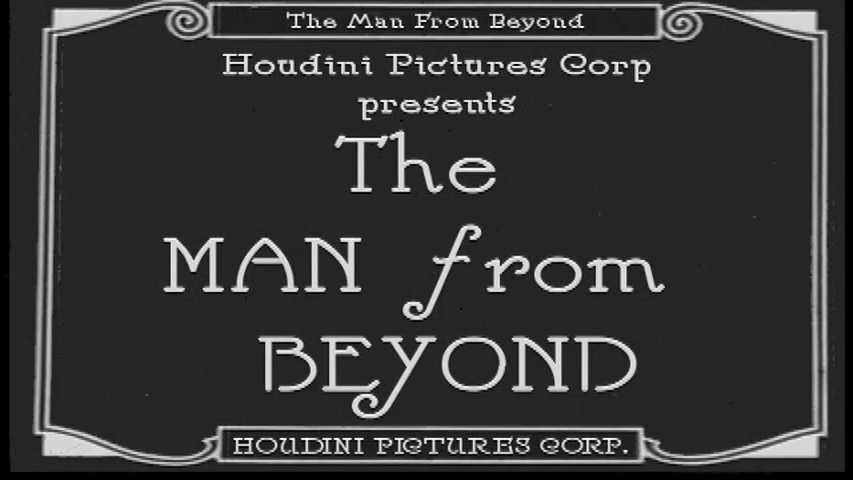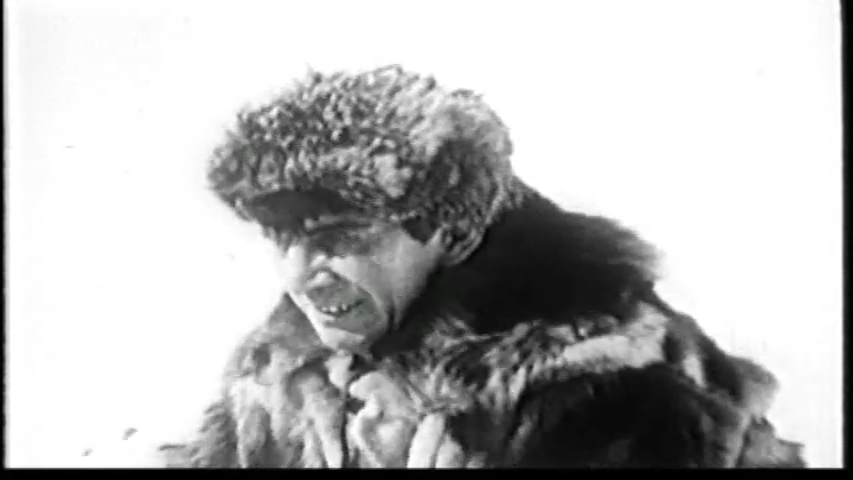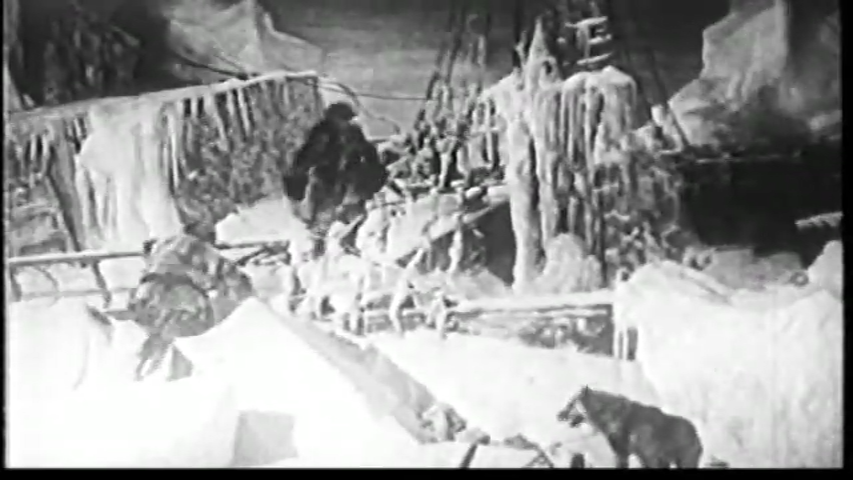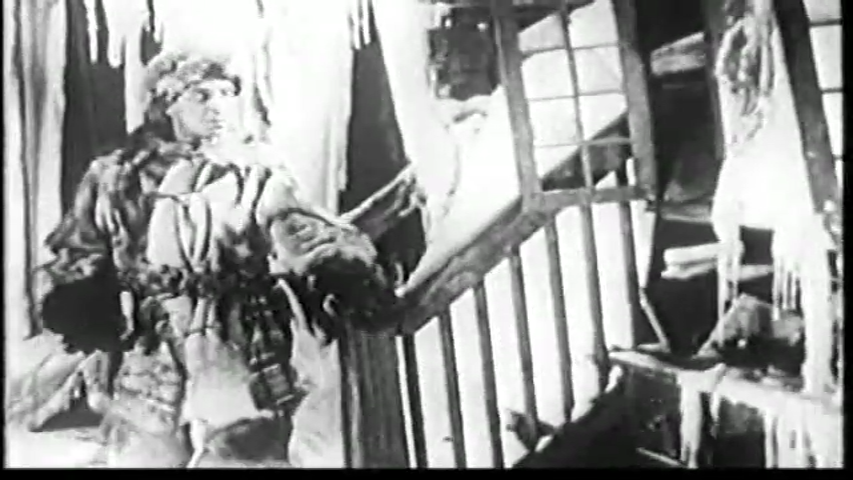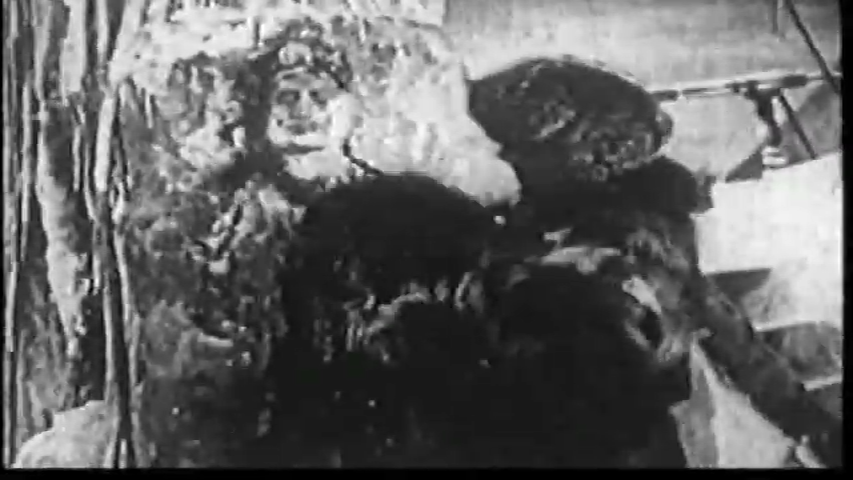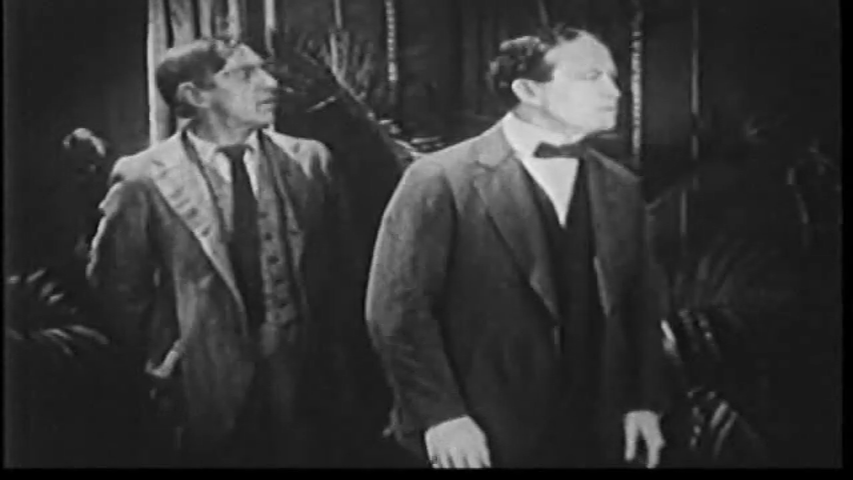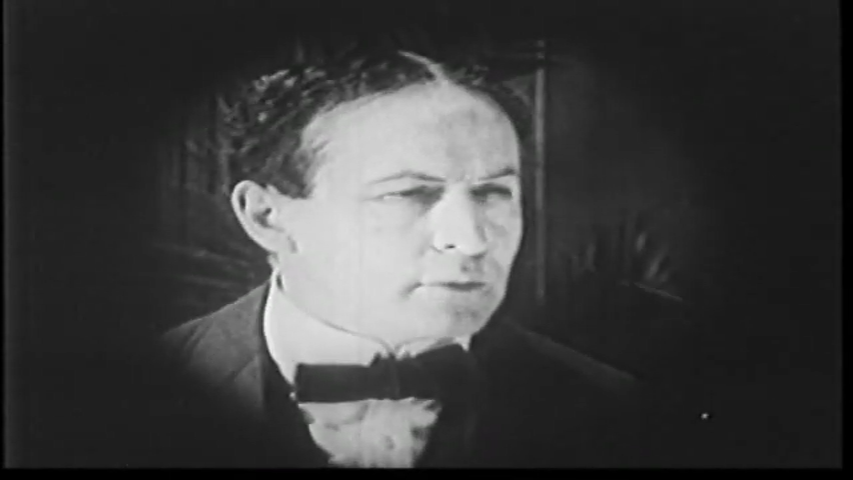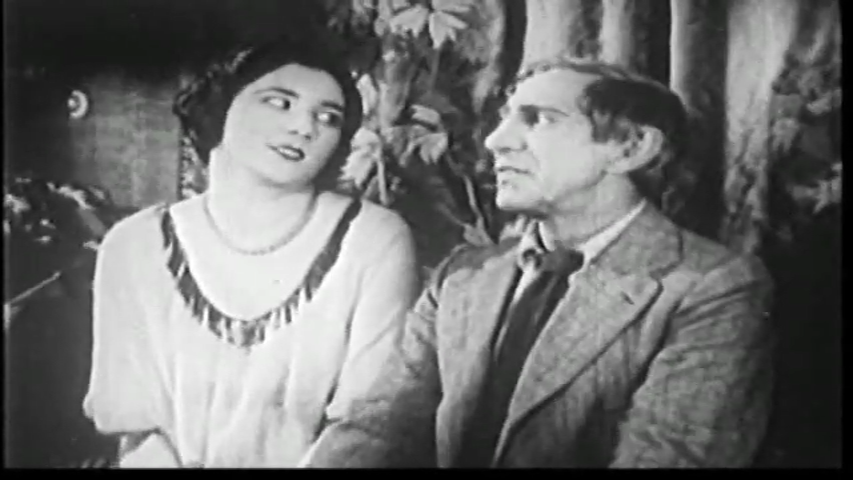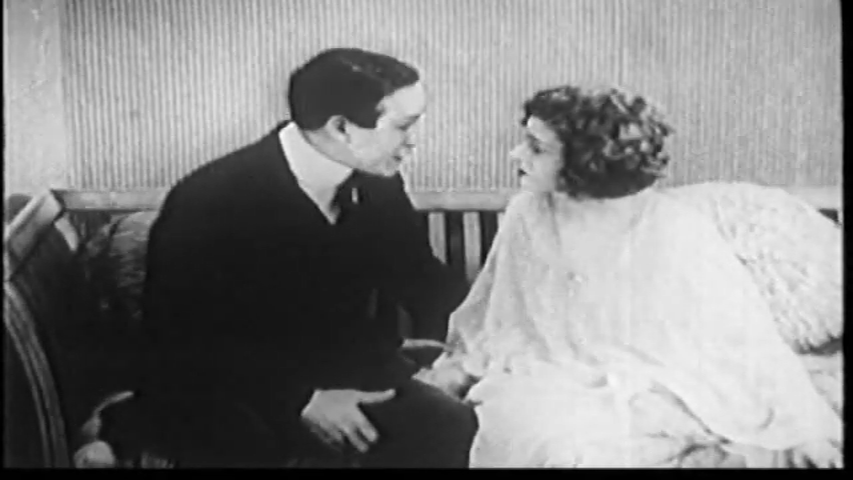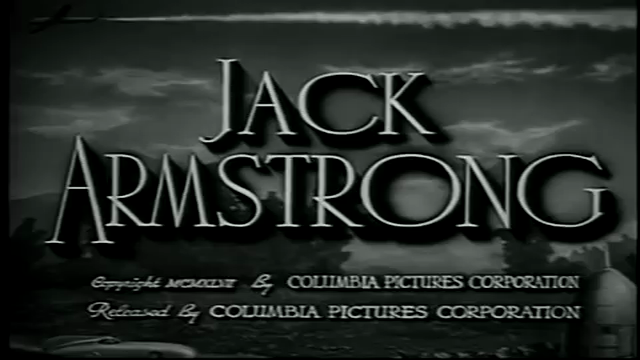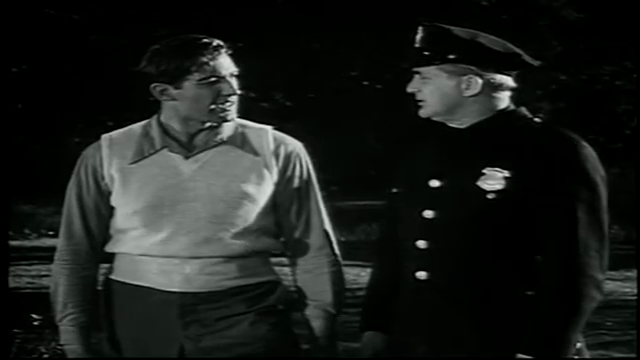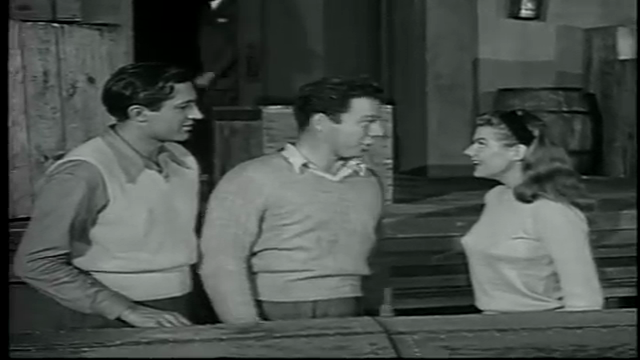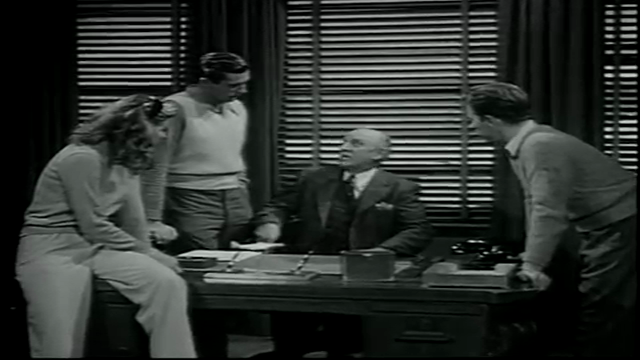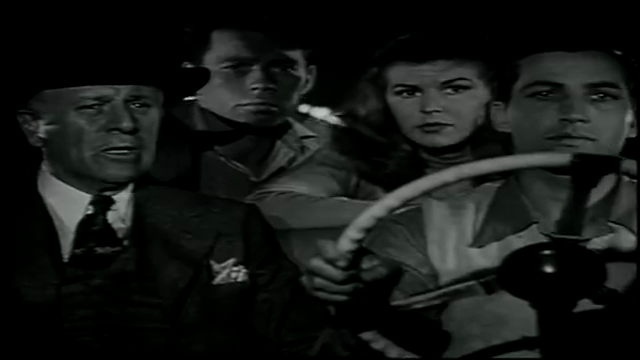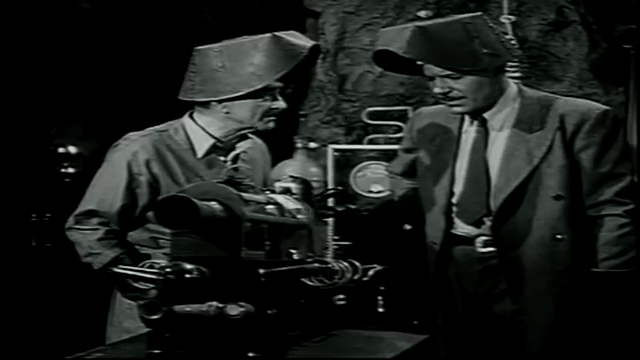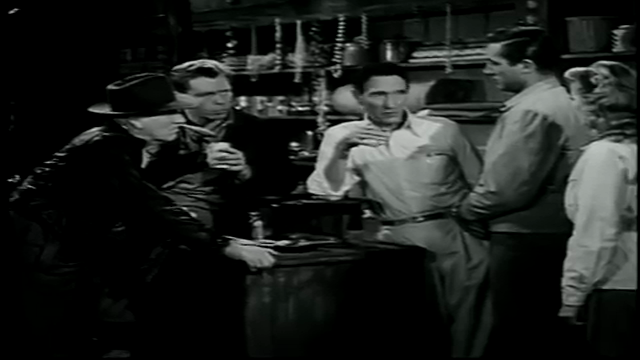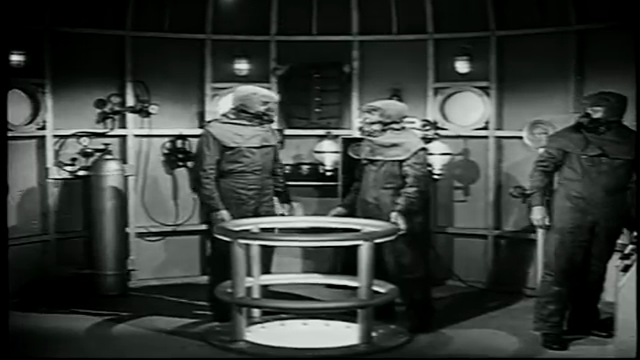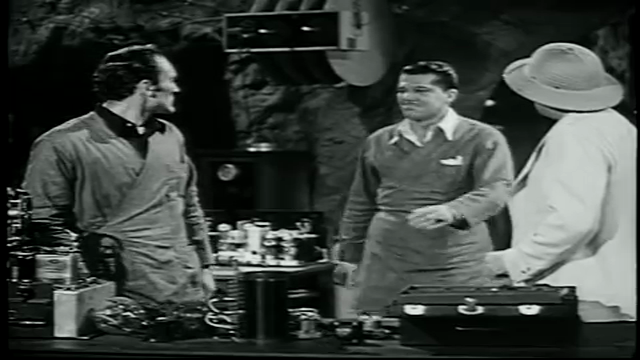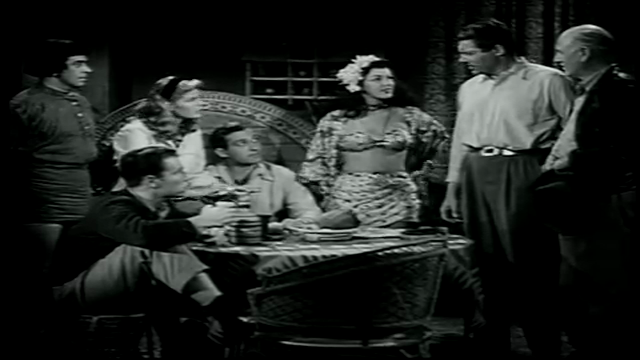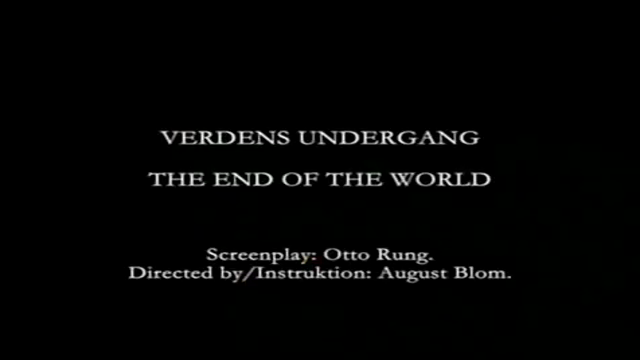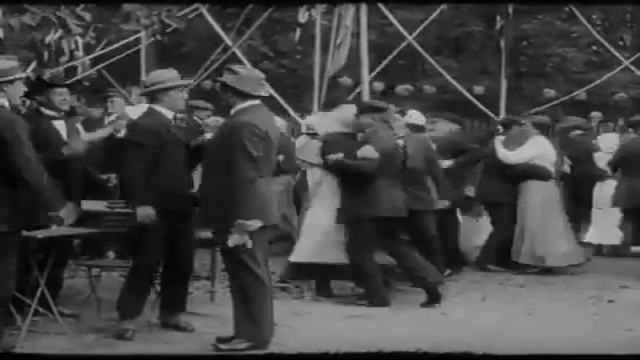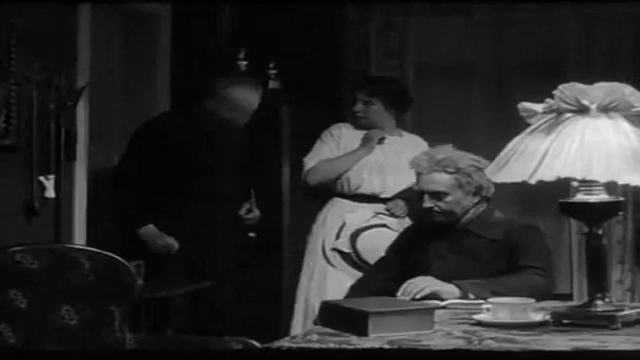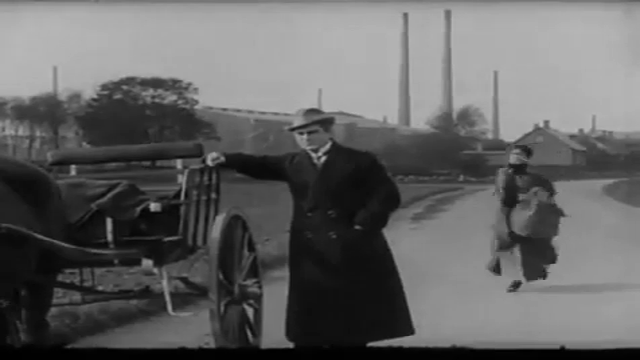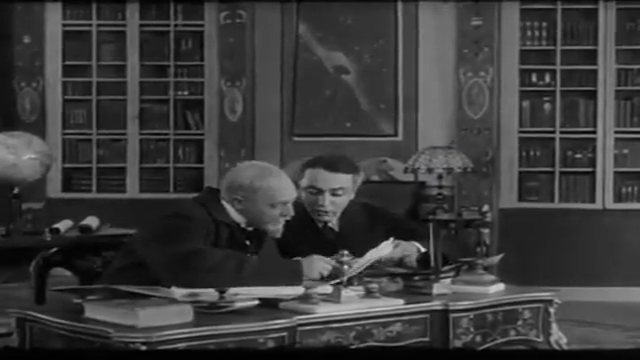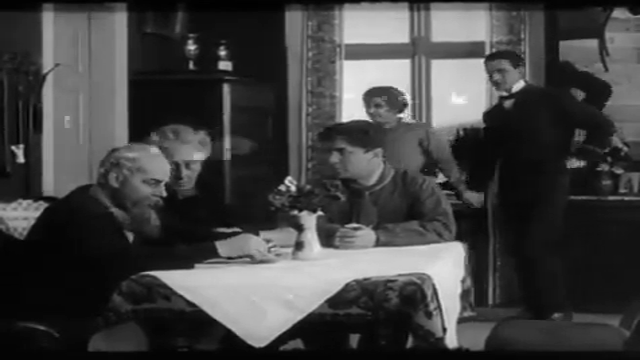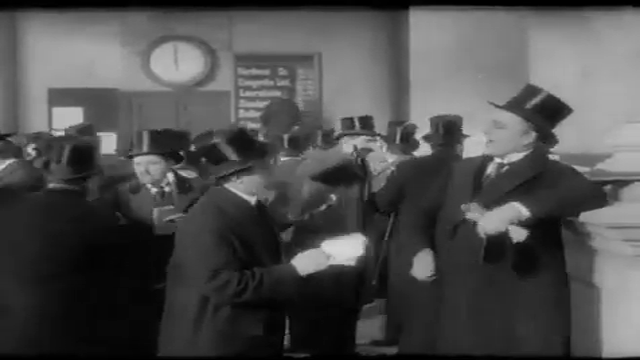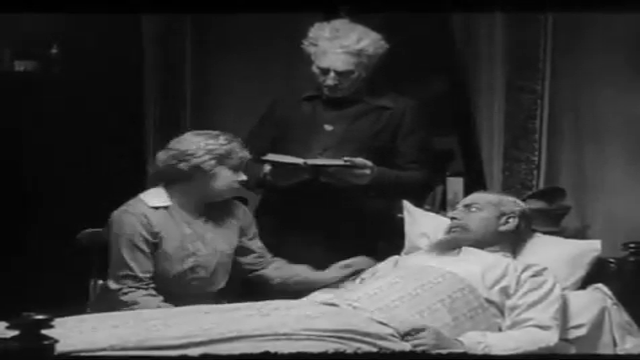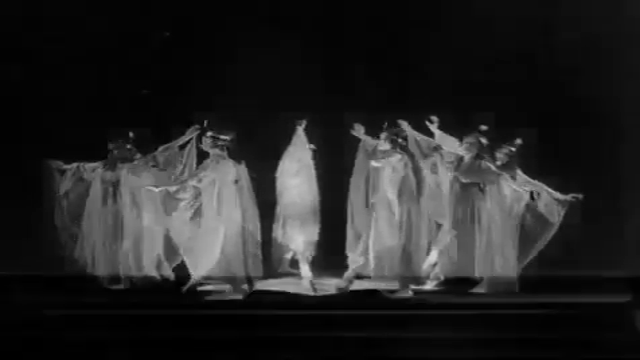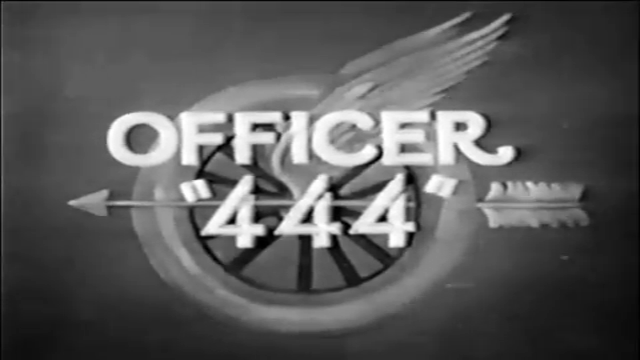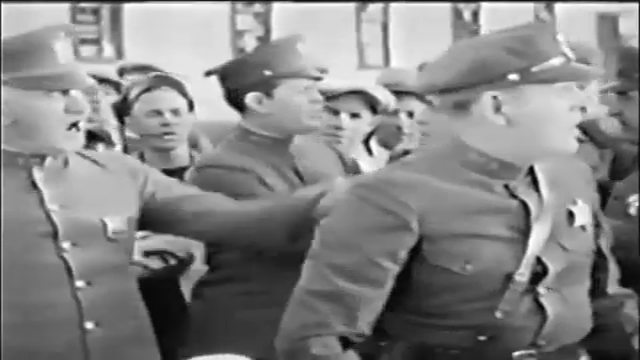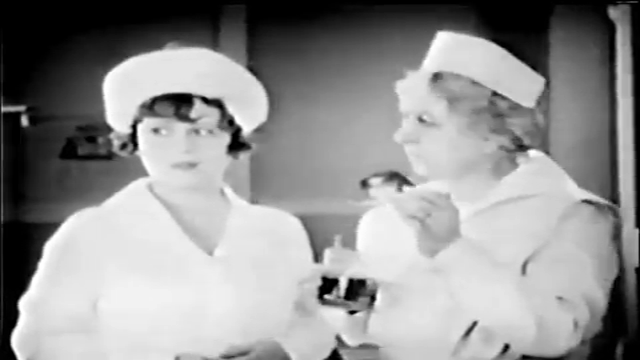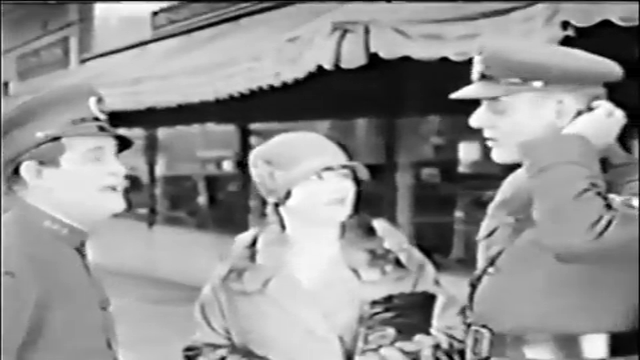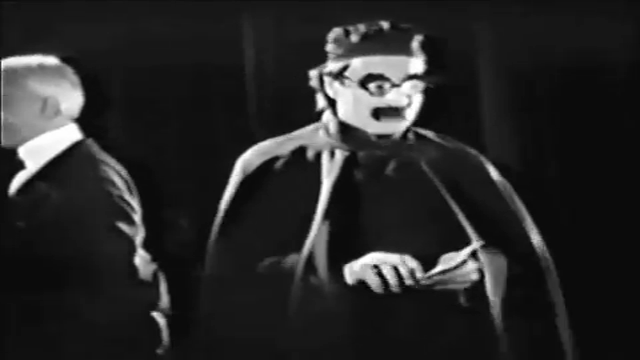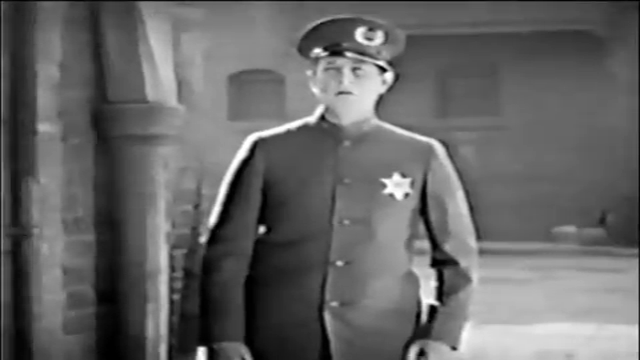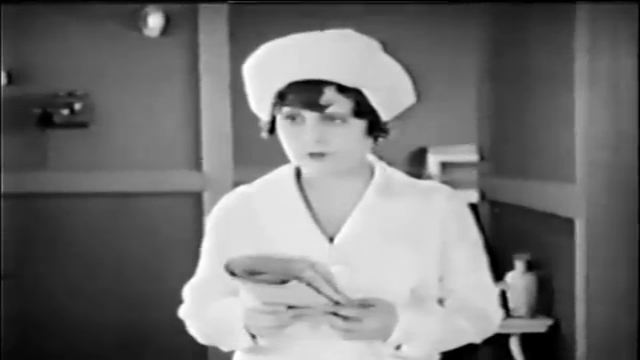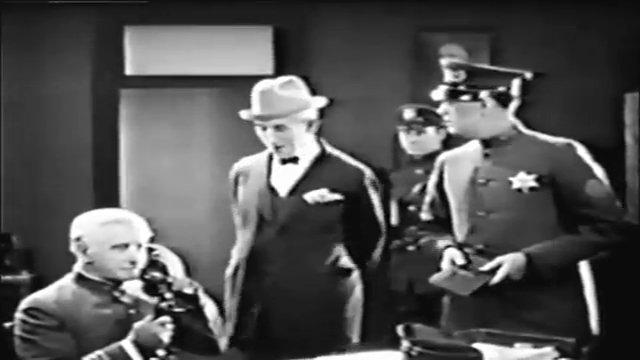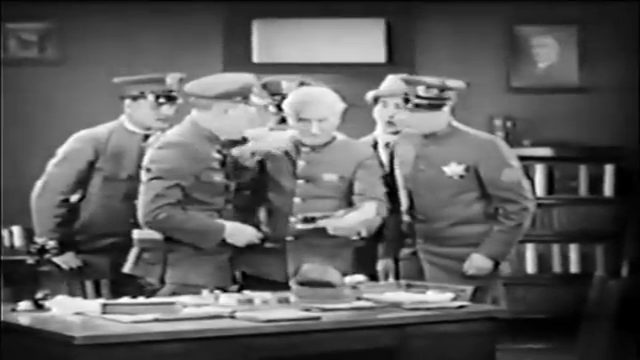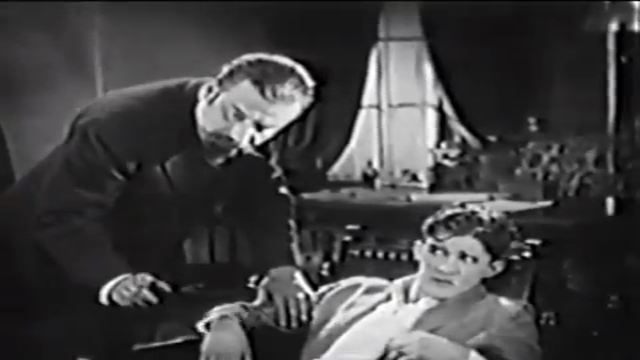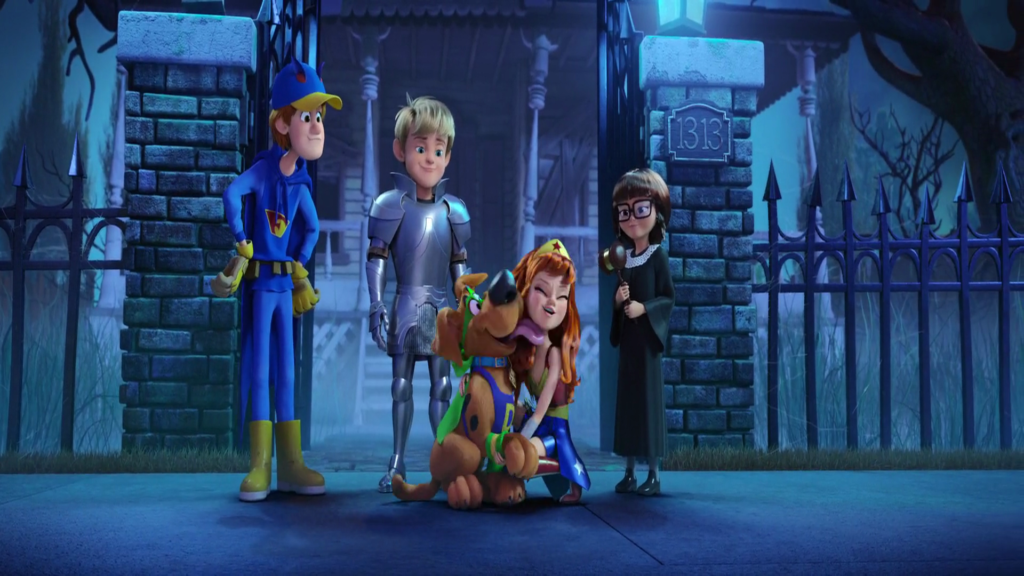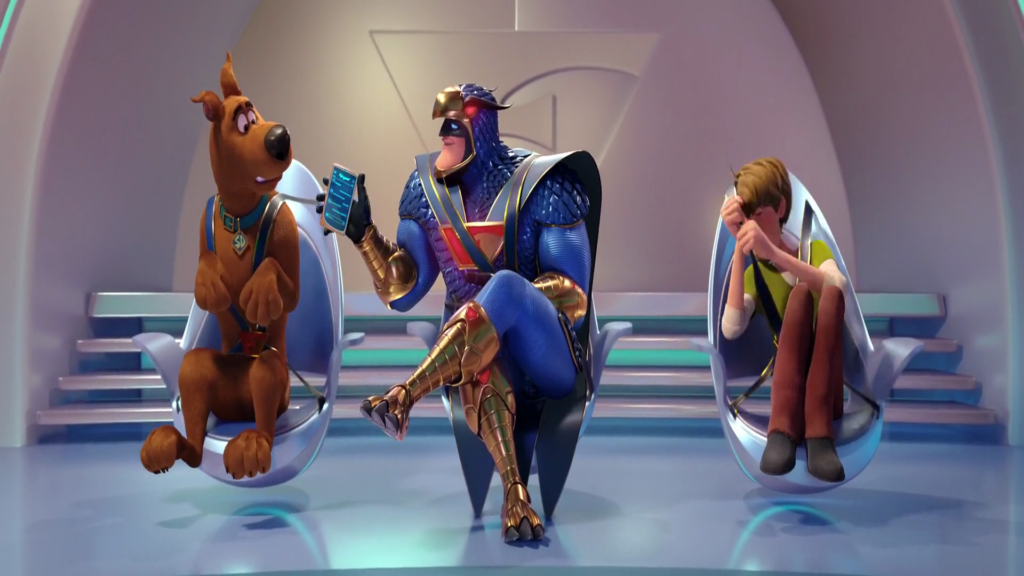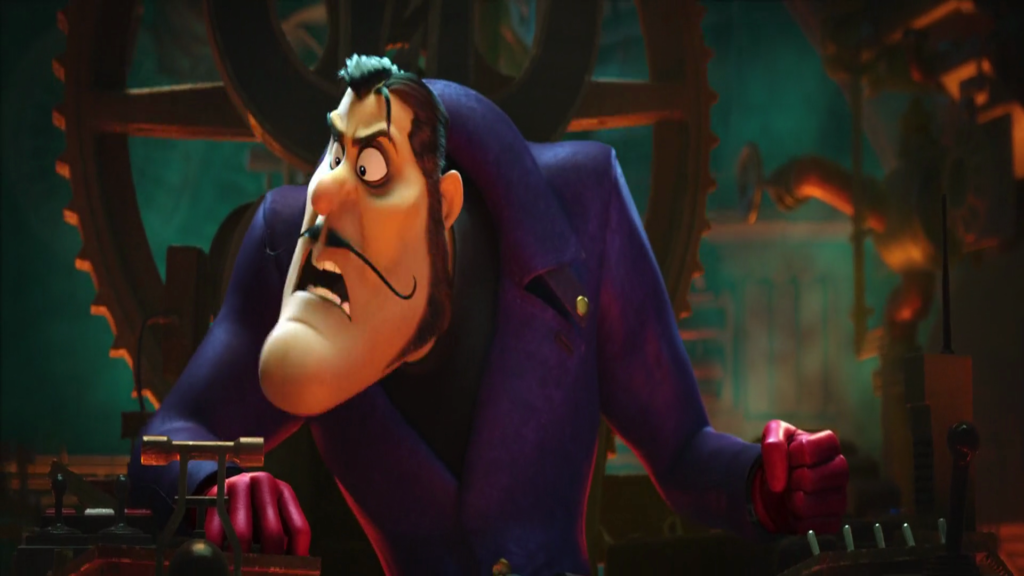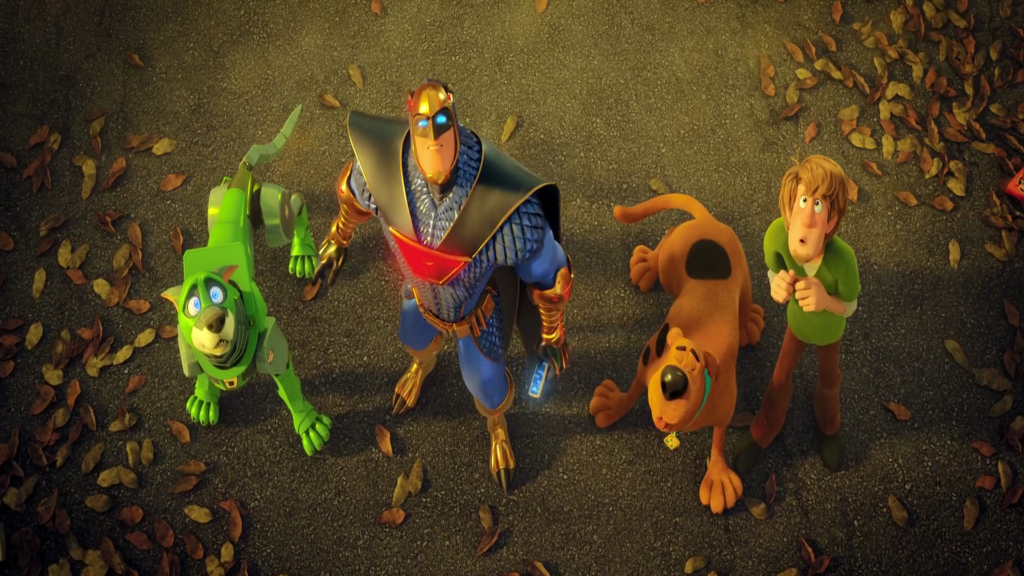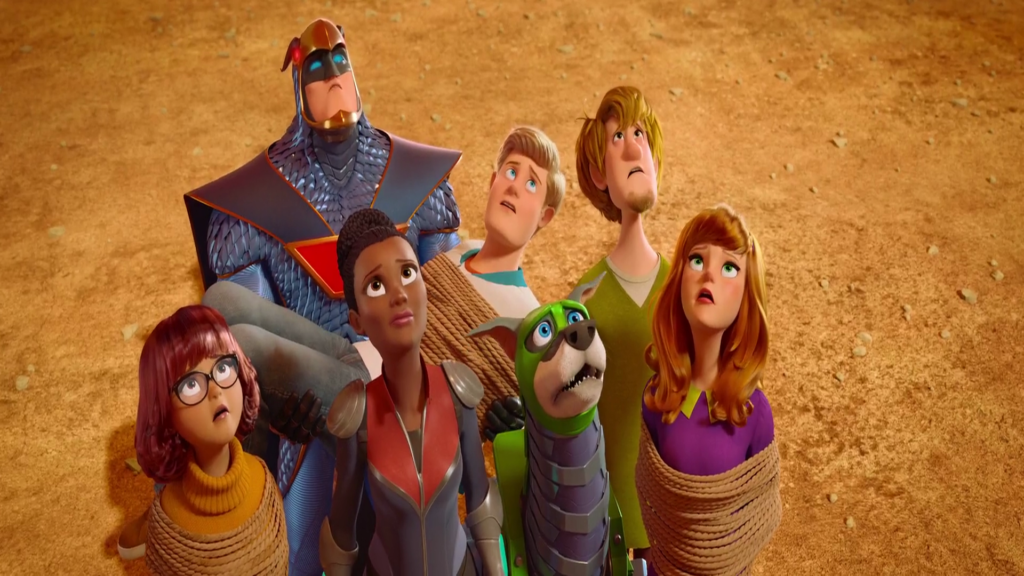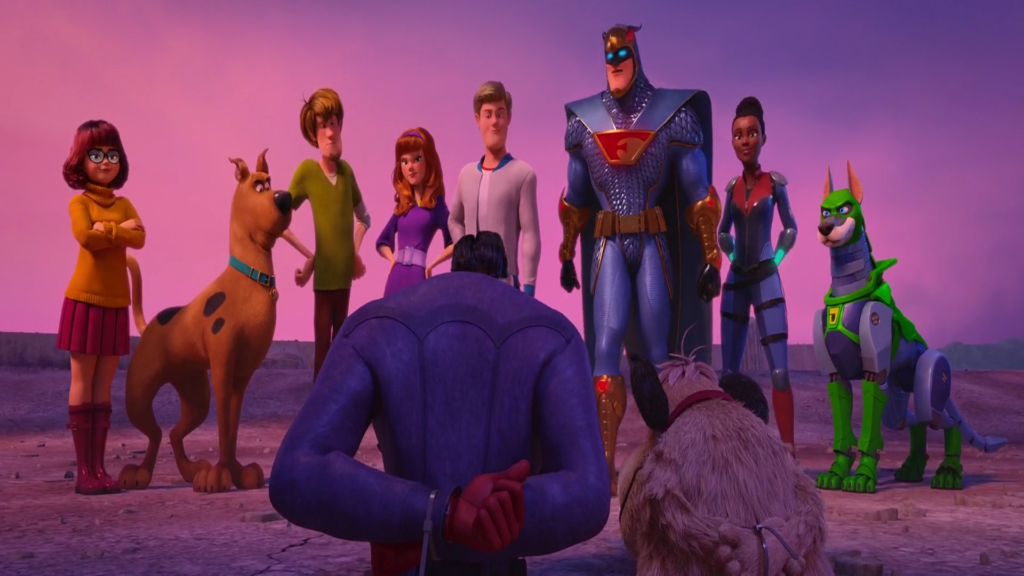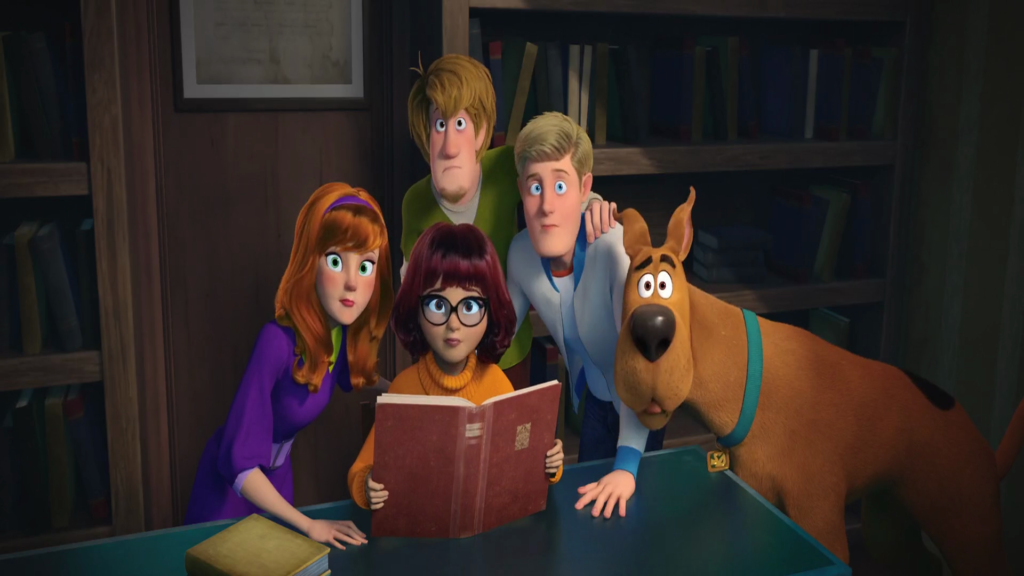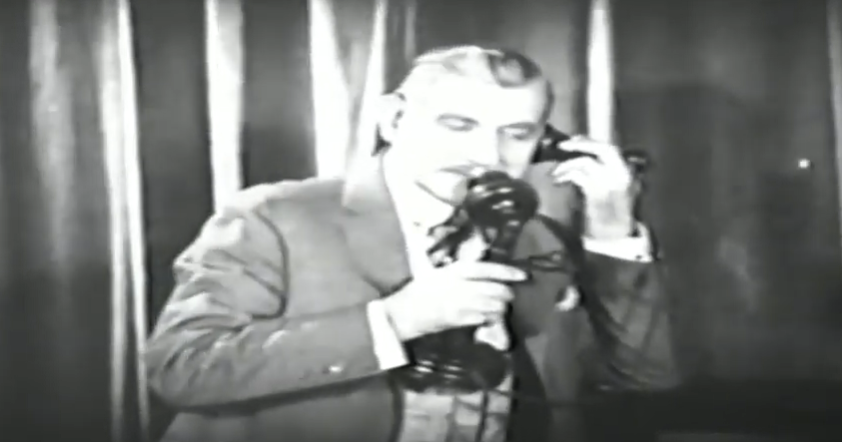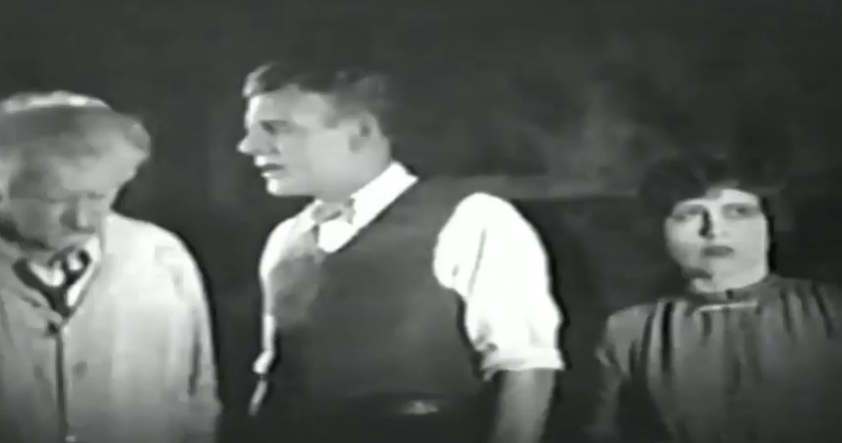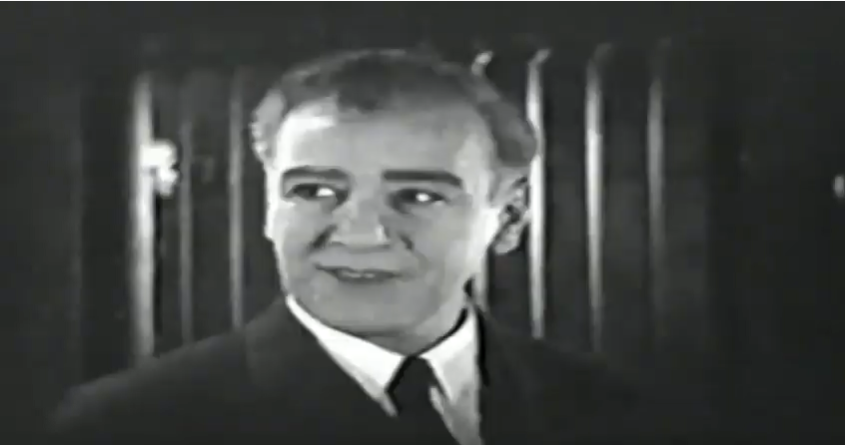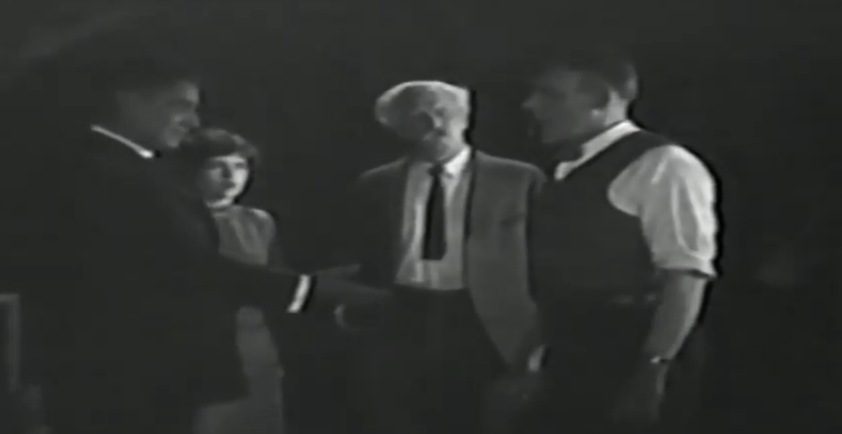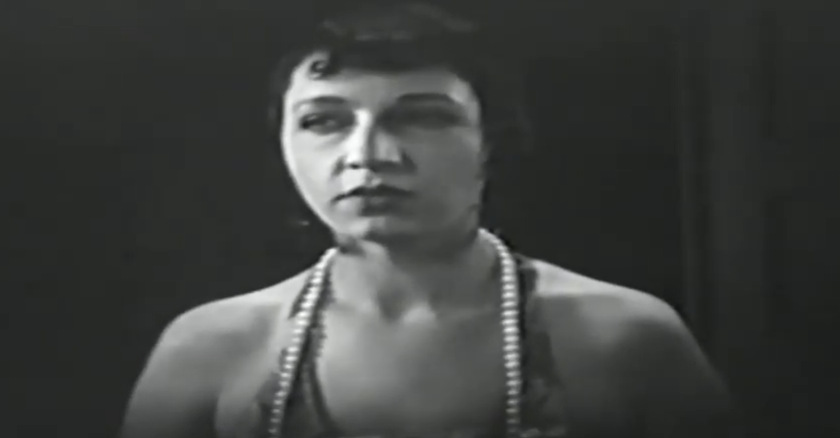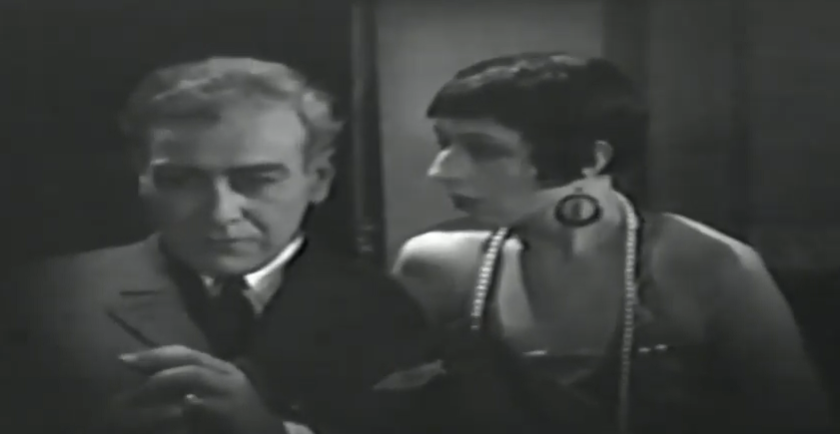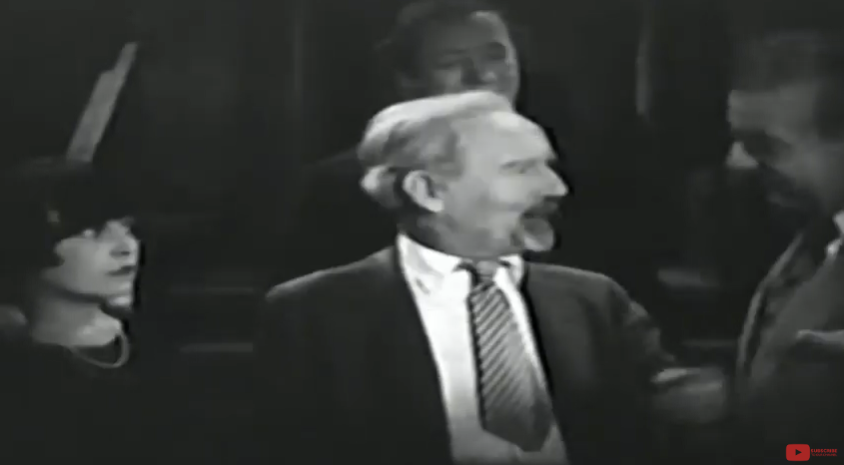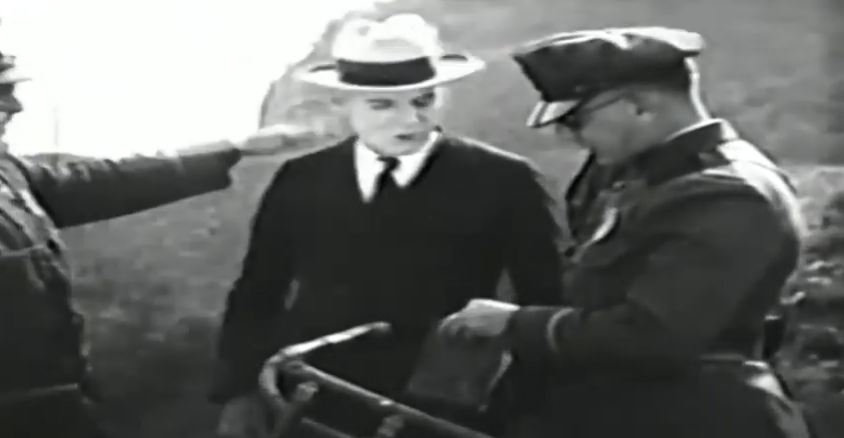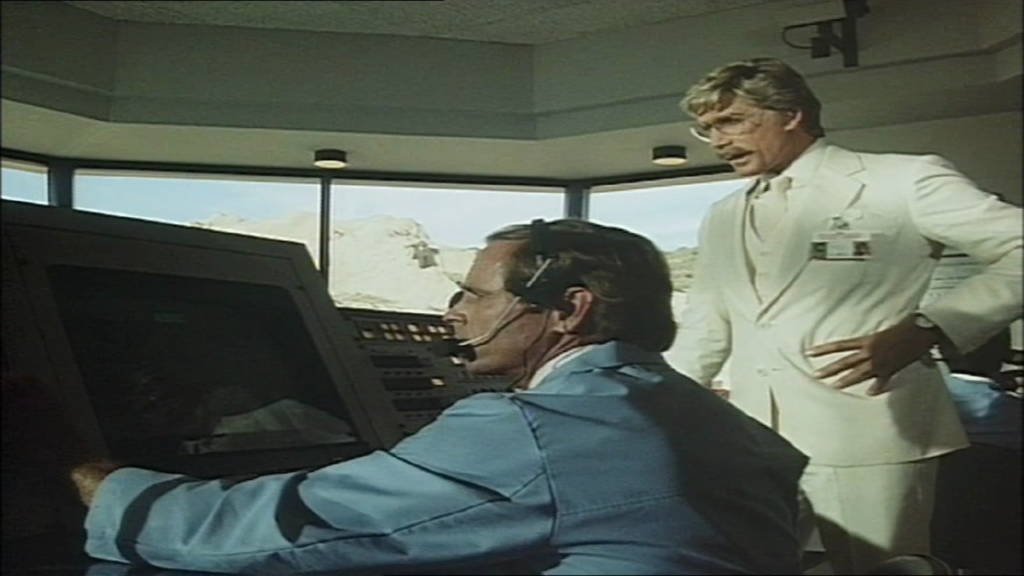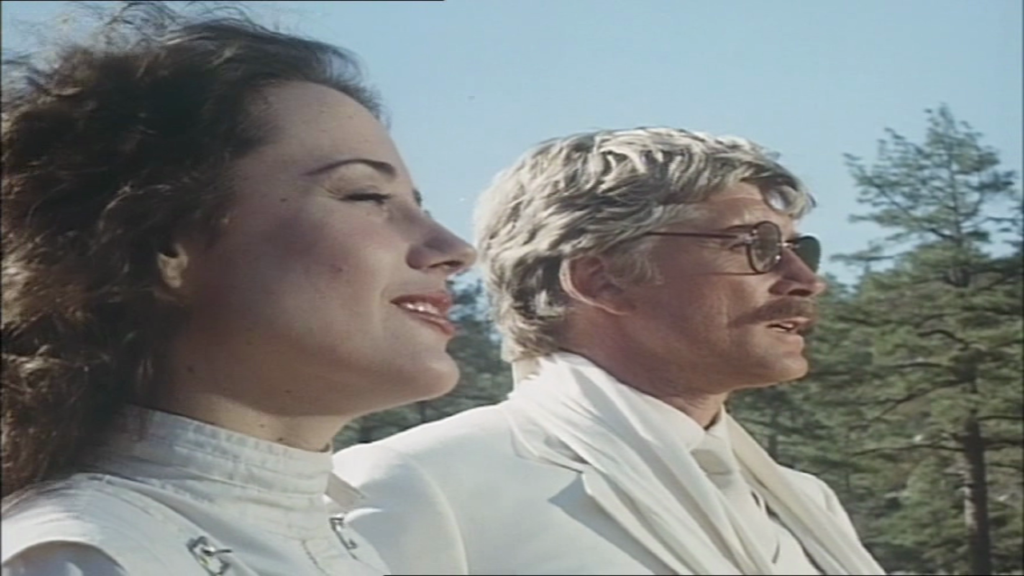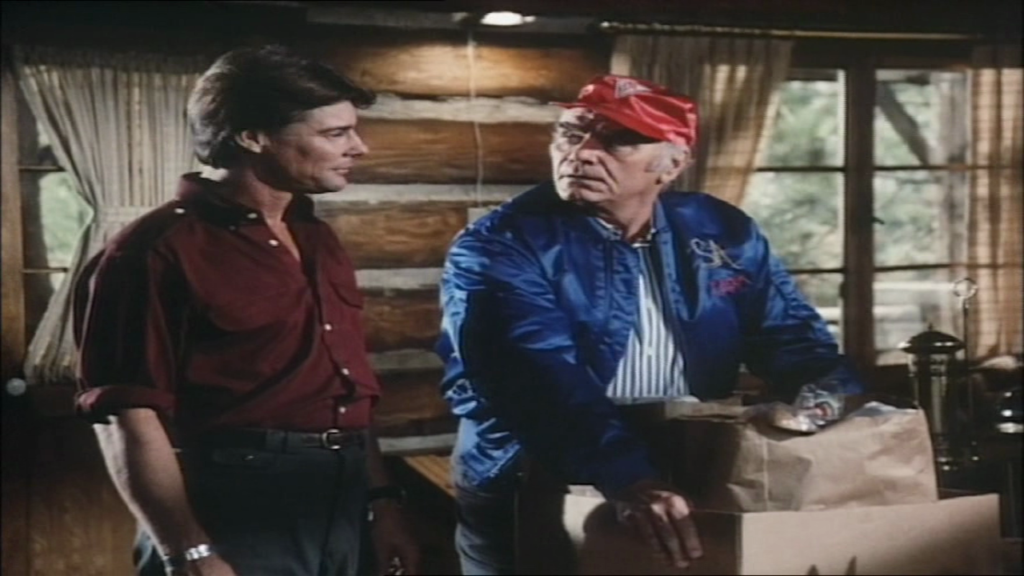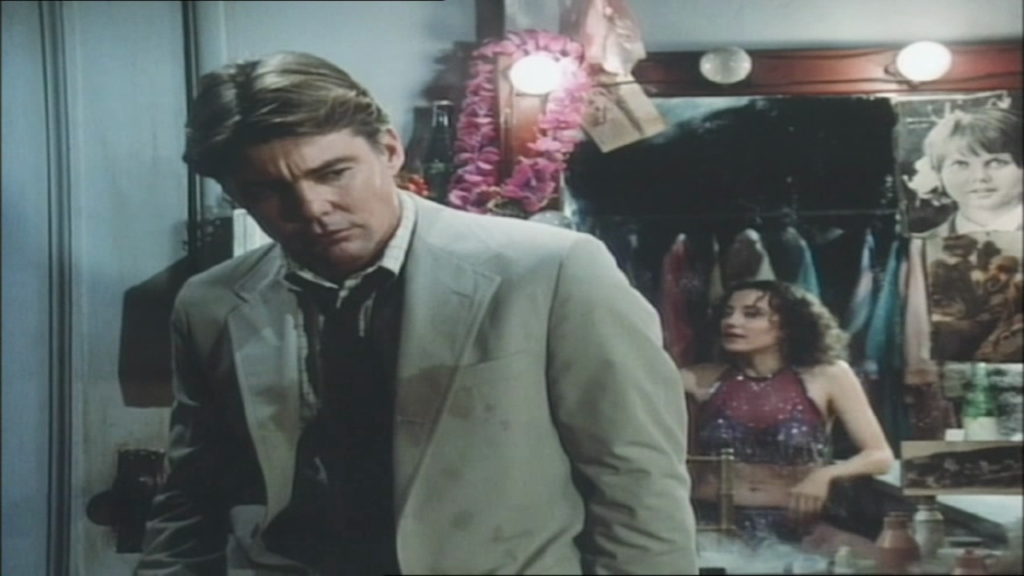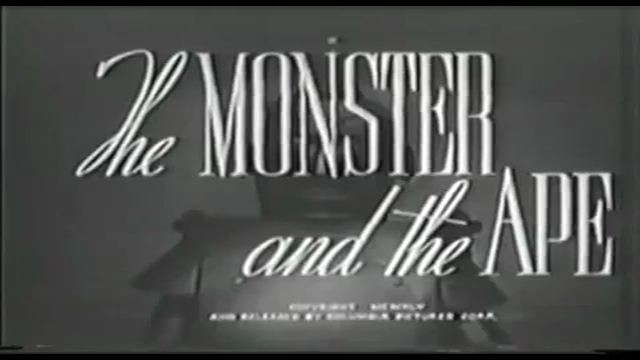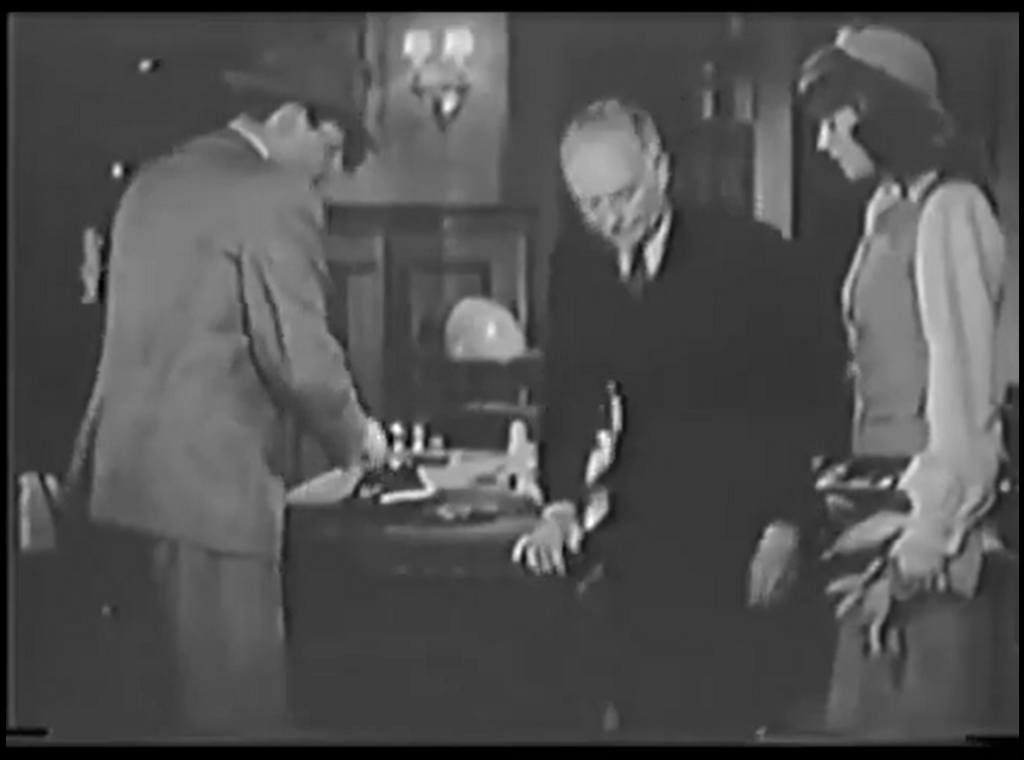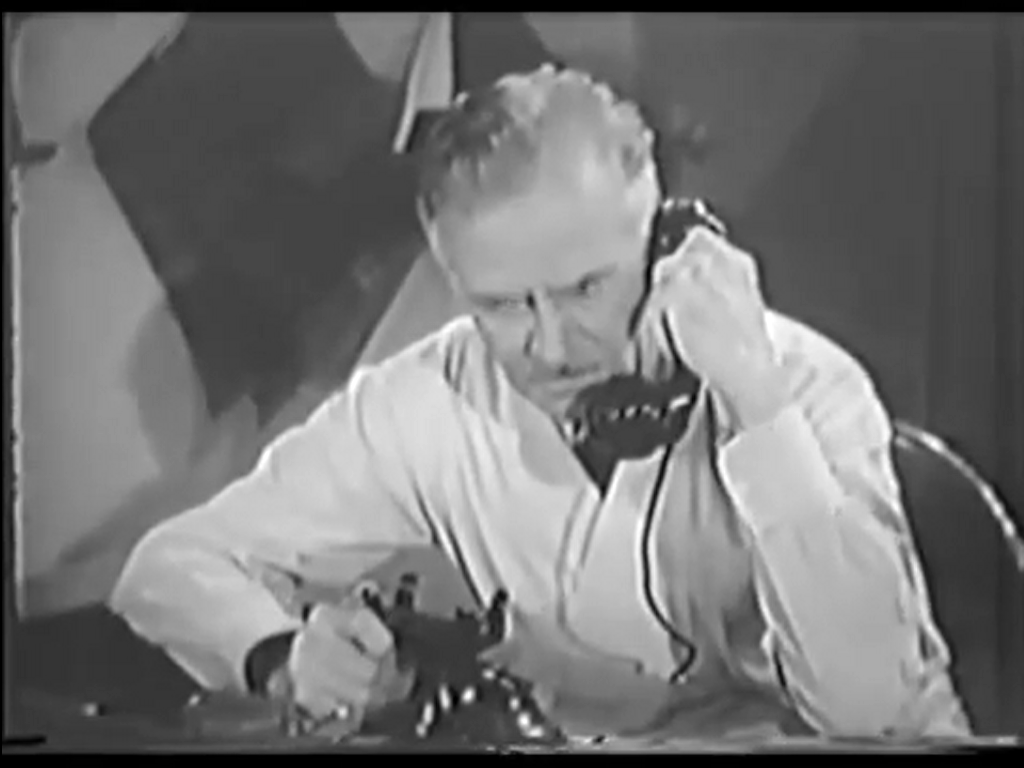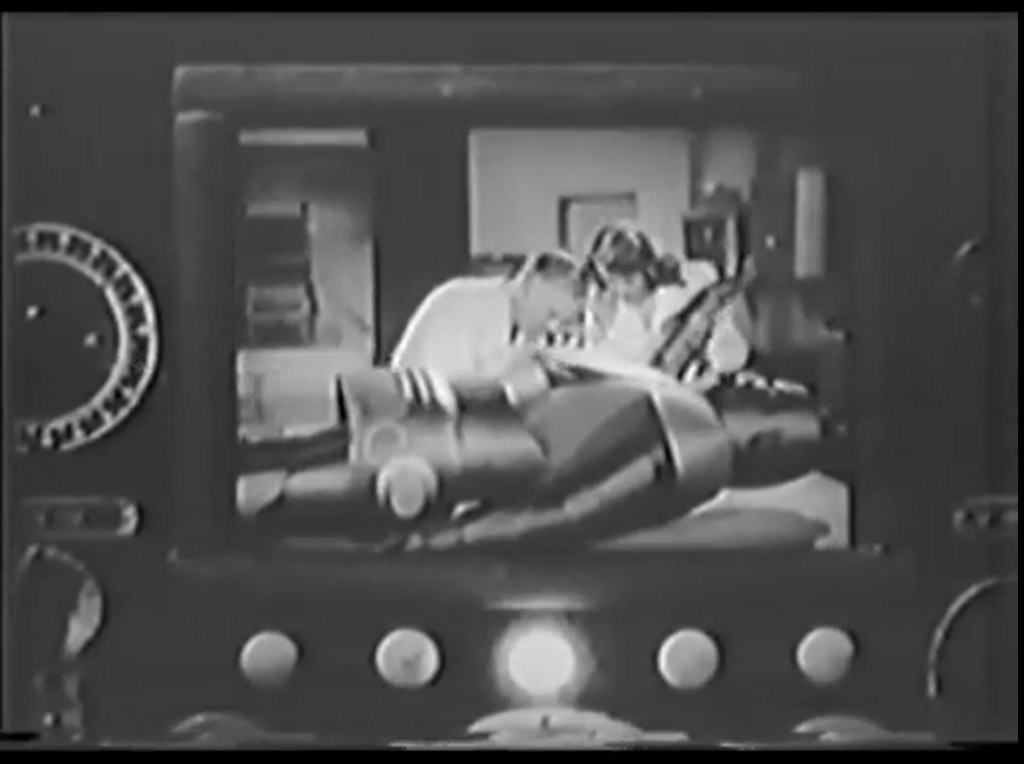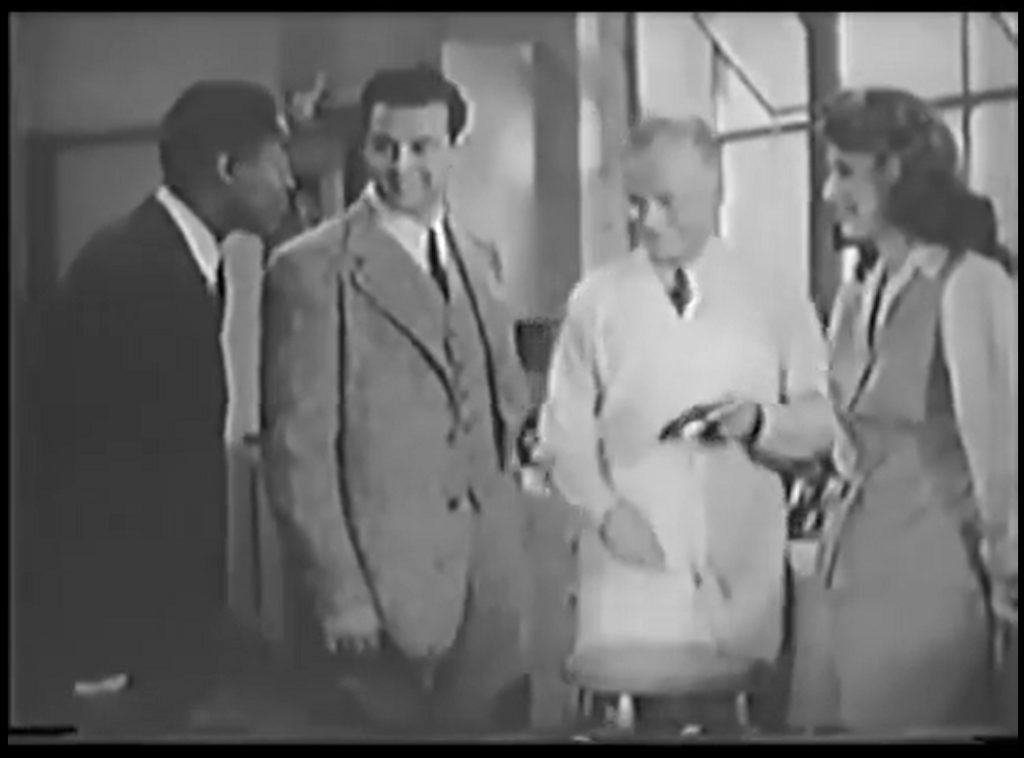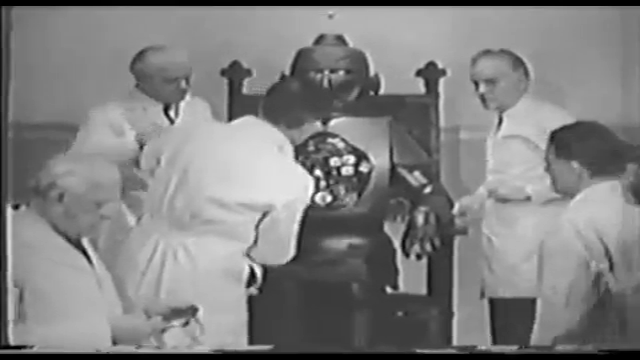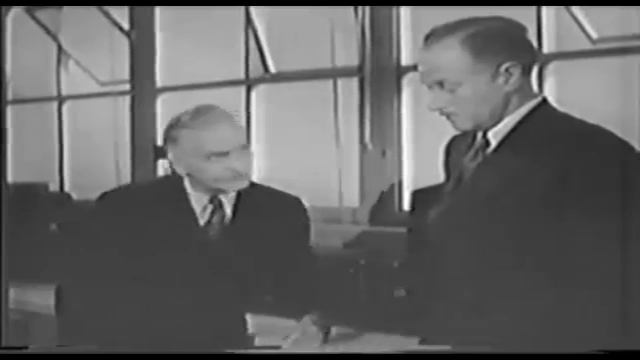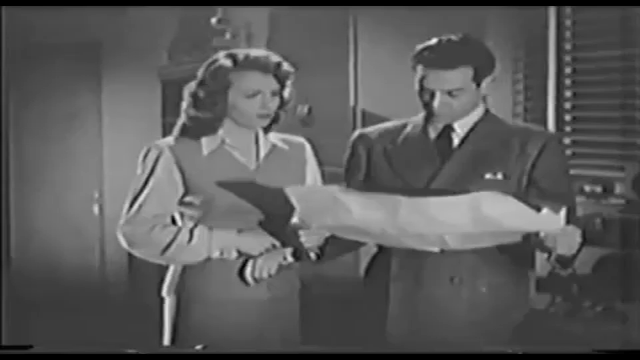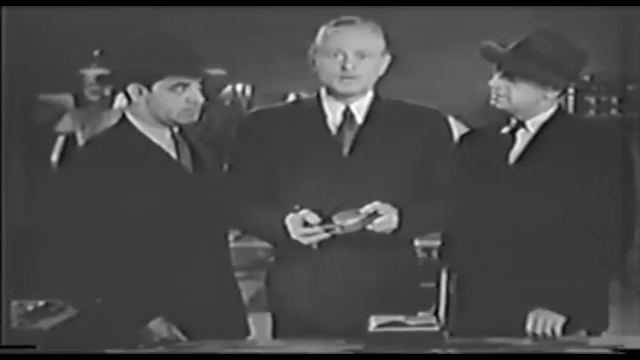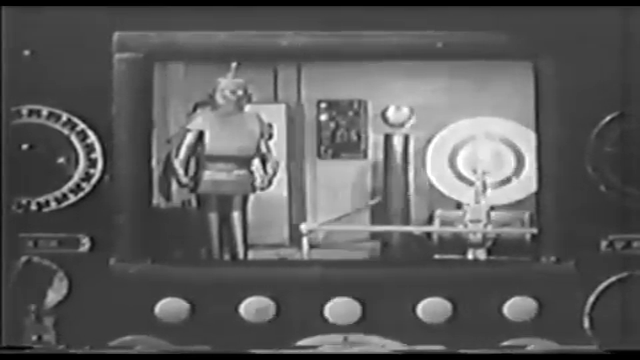-
#411 – The Spider’s Web (1938)
The Spider’s Web (1938)
Film review #411
Directors: James W. Horne, Ray Taylor
SYNOPSIS: A wave of crime across the city targeting key infrastructure and transportation networks is being conducted by a criminal mastermind known only as “The Octopus” with aims to take over all the key utilities and companies. Criminologist Richard Wentworth must don his secret identity of “The Spider” in order to thwart The Octopus’ plans outside of the police’s rules and regulations…
THOUGHTS/ANALYSIS: The Spider’s Web is a 1938 serial based on the comic book character “The Spider” (not to be confused with spider-man). The serial starts out strongly as most of the format does in order to entice viewers back week after week. In the opening chapter contains plane crashes, car chases, fist fights and a heap of explosions, so there’s definitely plenty of bang for your buck. The explosions and destruction of key transport and city infrastructure is being carried out by a criminal mastermind known only as “The Octopus,” who seeks to put his own men in charge of all these utilities by killing off the current managers of them. Renowned criminologist Richard Wentworth is travelling home on his plane with his sweetheart Nita van Sloan when their plane is attacked and they have to parachute out. Wentworth learns of this new crime wave and decides to once again become the masked vigilante “The Spider,” who chases crime where the rules and regulations of the police cannot go, even though he promised Nita that he had retired from the costumed life. The story is a standard serial affair of the hero foiling the villain’s various schemes across the fifteen chapters, and while it does not do much unique in terms of story, it still executes the usual plot points in a fun and interesting way, and with a good level of competency.
The characters are a typical cast of serial characters. Wentworth is the usual lead character, Nita is the sole female character, and Jackson is the sidekick who gets in on some of the action. Ram Singh is Wentworth’s assistant who is clearly meant to be Indian, but is portrayed by a white American and refers to him as “Master” occasionally like he is a servant. and that is obviously a problematic stereotype of non-white people being subservient to them. Wentworth himself is very much like Batman’s alter-ego Bruce Wayne: he is rich, clever, works alongside the police, but when he dons his mask to fight crime, he is wanted by them. He can also disguise himself as a known criminal “Blinky” McQuaid, which he uses to get close to the criminals and get the information on their plans. These different facets to the main character add some good variety to the serial, and make the lead a bit more stand-out from the sheer volume of serial leads which all look and act the same. The Octopus as a villain is shown to be cunning and ruthless, as he executes those who fail him. His being dressed in a white hood and cloak mirrors the Spider’s outfit, which is almost the same, but in black. The identity of The Octopus is, unusually for such a serial, never really explored or even revealed in the finale, and we are only told he is one of the most powerful men in the city.
At the time of it’s release, The Spider’s Web was a huge success, and it is easy to see why: it doesn’t deviate from the serial format, but does all its tropes pretty well. The character of The Spider as a masked vigilante probably helped kick-start the popularity of masked superheroes, and serial adaptations in the 1940s. The Green Hornet, one such serial, is practically identical in both story and characters, with the masked vigilante stopping crime and eluding the police, while being aided by a foreign sidekick.
-
#410 – Hop Harrigan (1946)
Hop Harrigan (1946)
Film review #410
Director: Derwin Abrahams
SYNOPSIS: Hop Harrigan, a pilot along with his buddy “Tank” Tinker, are hired to escort a scientist to his secret laboratory hidden in the mountains, where he is working on a powerful new source of energy. Meanwhile, a man known only as the “Chief Pilot” is after the invention for himself to use as a deadly weapon. Hop and his friends are caught up in the schemes of all of these players, and they must stop them before disaster befalls the world…
THOUGHTS/ANALYSIS: Hop Harrigan is a 1947 movie serial based on the Hop Harrigan character from the All-American Comics series, as well as the radio plays. Harrigan became quite popular during the course of the second World War, probably due to his heroic piloting antics which would have resonated with the population. However, his population waned after the war ended along with many of the similar characters, with people rather turning their attention to costumed superheroes and the villains being spies rather than soldiers. The serial starts off with Hop performing a mid-air rescue, then returning back to the airfield where he works. he is offered a job by a man named Arnold to fly a scientist named Dr. Tobor to his secret laboratory. Tobor has been working on an invention that runs on a powerful new energy, and has to keep Hop and Tank blindfolded while in the air so they do not see where the lab is. Meanwhile, an unknown person calling himself “The Chief Pilot” is intent on getting a hold of Tobor’s invention for himself, and sends his goons to kidnap him. The plot of the serial as always follows the standard format of each chapter having a different scheme or plot to foil, with it ending on a cliffhanger for the next chapter. I imagine the serial format isn’t the best one to adapt Hop Harrigan in, as he is probably more used to dealing with soldiers and villains rather than engaging in thwarting espionage, but again that’s like a lot of the serials, which used the name of a comic book character and didn’t really adapt anything else about them.
On the heroes side, you have the standard All-American heroics of Hop Harrigan, his sidekick and comic relief “Tank”, who offers some decent interactions with his goofiness playing off against other characters. Gail is the token female character who runs the airfield (though she doesn’t really do much), and her younger brother Jackie, whose book-smarts often clash with Tank’s brute-force approach. Jackie provides a good example of a younger characters which the kids in the audience can relate too, and he has a decent amount to do, which helps in that regard. Other than that though, the heroes are pretty unremarkable. There are quite a few villains in this serial, ranging from the mysterious Chief Pilot, whose identity isn’t revealed until the end (a typical serial trope), and an array of henchman, some of whom are working with the Chief Pilot, and some who are working for Hop’s employer Arnold and secretly working against him. There’s also Dr. Tobor (’Robot’ spelled backwards in case you hadn’t noticed; I’m pretty sure I’ve watched another serial or film which uses the same name, but I can’t remember which), who essentially plays the eccentric scientist who becomes more and more erratic as the serial progresses. He is sought by both heroes and villains, and constantly tricks them and plays them for fools, which shakes up the dynamic. Tobor as the wildcard element helps to give a bit of an original edge to the story, and that is welcome.
If you’re going to watch a Hop Harrigan serial, then no doubt you’ll be expecting plenty of scenes in the sky and plane fights. The serial more or less delivers what it promises with plenty of scenes taking place in the air, and shot reasonably well for the time, but most of the action does take place on the ground, and the plane scenes are just to travel from place to place, or to follow a car from the air.
-
#409 – The Man from Beyond (1922)
The Man from Beyond (1922)
Film review #409
Director: Burton L. King
SYNOPSIS: An expedition finds a shipwreck frozen in the Arctic. On board, they find a man encased in ice. They begin to free him, and learn from the journals on the ship that the man was frozen over one hundred years ago in 1820. They decide to not tell him about this until they are ready to announce his discovery to the world. When the man is taken to the home of a scientist, he sees a woman being married that he believes is the same one he loved over one hundred years ago. Little does he know, he is interrupting an evil scheme undertaken by the man she is marrying…
THOUGHTS/ANALYSIS: The Man from Beyond is a 1922 film starring the famous escapologist Harry Houdini. At the start of the film, we see two men on an expedition in some frozen wastelands, when they stumble across a ship embedded in the ice. Dr. Sinclair, the head of the expedition, learns that the ship had been wrecked in 1820, over one hundred years ago through reading some of the journals on board. They find a man encased in ice who they are able to thaw out. The man wakes up and still believes he is in the year 1820, and Dr. Sinclair decides not to tell him how long he has been frozen until he is returned to civilisation where his discovery can be announced to the world. He is brought to the home of Dr. Sinclair by car…which is a bit odd considering that there were no cars in 1820, and so the man should probably have been suspicious about what was going on? Anyway, the man, Howard Hilary, sees that a wedding is going on between a man named Dr. Trent and a woman named Felice…who resembles the woman he loved before he was shipwrecked, also called Felice. Hilary interrupts the wedding believing the Felice he knew has abandoned him, but this Felice has no idea who he is.
The man Felice is to marry, Dr. Trent, is planning to marry her so he can get his hands on her Father’s property. Her Father, Dr. Strange (no, not the Marvel superhero) has been missing for nearly a year after he went along for the voyage, but apparently got a not saying his daughter was sick, and never returned home. The plot mainly revolves around Hilary attempting to stop Dr. Trent from marrying Felice and uncovering his evil scheme, while attempting to find her Father. I feel like the film could have done more with the premise of a man waking up after one hundred years. Instead, it focuses on a love story and an evil scheme that doesn’t really live up to what it could have been. The story is well put together, and the pacing is decent enough along with a varied cast of characters, but not enough attention is given to the novel premise of the film. Being a Houdini film, there are a few scenes of him performing some escape acts, and the finale being set on a raging river delivers some entertaining action that adds variety.
The film opens up showing a quote from the bible, which I assume is due to the whole theme of bringing someone back from the dead and reincarnation would have been controversial and heretic for a film at the same, so the film frames the events in this Christian way to avoid these accusations (which would be my guess anyway). Another interesting reason for this may be because the film was also a means for Houdini to restore his friendship with Sir Arthur Conan Doyle, the writer of the Sherlock Holmes stories. Doyle, while not particularly religious, was an enthusiast for Spiritualism, and wrote two books on the legitimacy of seances, communicating with the dead, ectoplasm and such forth. Houdini was a vocal sceptic of spiritualism, and the pair fell out during a seance where Houdini’s Mother was supposedly speaking from beyond the grave through a medium, and Houdini was enraged when the medium spoke in English, even though Houdini’s Mother only ever spoke and understood German. It seems to have had the desired effect, as Doyle praised the film and its message. Whether Houdini really changed his mind or not on spiritualism I’m not sure, but it’s an interesting story.
Overall, The Man from Beyond is a decent story for the time, with some good special effects and the expected Houdini escape feats. It’s messaging around reincarnation is a bit muddled however, and the unique premise of a man who has been frozen for over a hundred years having to adjust to ‘contemporary life’ isn’t really given any thought or focus. If you want a film which does that, the 1930 film Just Imagine! is probably one of the earliest examples.
-
#408 – Jack Armstrong (1947)
Jack Armstrong (1947)
Film review #408
Director: Wallace Fox
SYNOPSIS: When a valuable shipment and scientist Vic Hardy are kidnapped, young Jack Armstrong along with his friend Billie, his Sister Betty, and their Uncle Jim Fairfield, all attempt to find and rescue him. They eventually track him to an island in the Pacific, where an evil scientist has hidden Hardy away in a secret laboratory where he is building a weapon that could enslave the world. Jack and his friends must deal with the native islanders and the scientist’s henchman before the weapon is completed and the world is at their mercy…
THOUGHTS/ANALYSIS: Jack Armstrong is a 1947 movie serial based on the radio play of the same name.The serial opens up with young Jack Armstrong and his friend Billie along with his sister Bettie working on a car at the Fairfield aviation company, which Billie and Bettie’s Uncle Jim owns. Almost as soon as the serial starts, a hit and run takes place outside the Fairfield office, so Jack and Billie jump in their car and give chase. This car of theirs is a huge beast that just looks like a big steel box put over a normal car. Nevertheless, it gives the opportunity for the serial to open on an action-based note, and to entice viewers to stay and come back for the rest of the serial’s chapters. After Jack and Billie catch the driver, their car is never seen or mentioned again, which is a bit naughty opening with it and thus giving the impression you will see more of it in the next chapters.
One of Jim’s employees, Hardy, is monitoring some strange signals in the ionosphere. One of Jim’s customers named Pearce overhears this, who is working for the gang making those signals for some evil scheme, and has Hardy kidnapped so he can be forced to help with their plan. Jack and the gang track Hardy down to an island in the Pacific Ocean, which they travel to, but their plane is shot down on approach. The rest of the serial takes place on the island, where they meet the owner of a trading outpost named Grood, who is secretly the mastermind of the evil scheme to rule the world through building a weapon and deploying it in the atmosphere. The story involves Jack and the gang dealing with Grood’s henchman, as well as the native tribes that inhabit the island, and later on Pearce when he shows up on the island still pretending to be our heroes friends.
-
#407 – The End of the World (1916)
The End of the World (1916)
Film review #407
Director: August Blom
SYNOPSIS: When it is discovered that a comet is due to pass by Earth, panic and uncertainty over whether the comet will actually strike the planet. Stoll, a stock broker, sees an opportunity to make some easy money preying on people’s fears, but when the danger becomes too real, he and his wife must return to the small mining town which she fled in order to marry Stoll…
THOUGHTS/ANALYSIS: The End of the World (Verdens Undergang, also sometimes titled The Flaming Sword) is a 1916 Danish science-fiction film. The film starts off with the inhabitants of a small mining town visited by the mine’s owner, Stoll. When Stoll meets Dina, the daughter of the mine foreman at a dance, he suggests that she run away with him back to the city. Following a chastising from her Father about being a “harlot” for staying out late on her own (such as it was in 1916 I guess), Dina decides to run away with Stoll, leaving behind her Sister, Father and her friend Flint, who had hopes of marrying her himself. Fast forward a few years and we see that Stoll is a successful financier whose stock market dealings have left him very rich, and his now wife Dina has everything she could ideally want. The beginning of the film really takes some time to establish the characters and their relations. Stoll is the focal point of much of the film, and while he is marked as the villain throughout much of what is going on, he is still portrayed as having some humanity in his faithfulness and dedication to his wife. Ultimately, his manipulation of the stock market and his treatment of the mine’s workers leave him as very much an enemy to many of the other characters. Being perhaps one of the first disaster movies ever, it does the job of portraying how the end of the world impacts a number of different people from different walks of life.
When Professor Wisemann sees a new comet through his telescope coming towards Earth, the discovery generates a lot of uncertainty and panic across the world, as no one seems to know if the comet will hit the Earth or not. Stoll learns from his brother that the comet will probably hit the Earth in northwest Europe and cause significant devastation, and devises a scheme to buy a large number of stocks while there is panic, and have his friend at a newspaper print the (false headline) that the comet will not hit, leading Stoll to sell his stocks at a higher price and become even more wealthy. Even when Stoll learns of the comet’s impact, he insists the newspaper print the misleading story that it will pass by Earth so he can fulfil his scheme. Again, Stoll is made out to be the villain because profiteering over the end of the world is hardly going to go down well is it? Meanwhile, events in the mining town are moving along as Dina’s sister says farewell to her sweetheart Reymers, who has just graduated as a sailor and is leaving on board a ship.
In the third act, with the comet looming ever closer to Earth, Stoll realises the only place he can take shelter is the mine in the town where he met Dina: however, the populace are less than happy at Stoll over the way he has treated their town, and when they learn he is coming to town, Flint organises an attack on Stoll. Dina is also reluctant to return to the town, but is finally convinced. As the comet gets closer, Stoll organises a party for the end of the world, while the workers decide they are going to storm the party, setting the conflict for the final part of the film. As the comet enters the atmosphere, fragments start to rain down over the town causing mass destruction. The special effects are quite remarkable for their time, even if they’re typically just sparks flying over model buildings. Also the image of a comet overlaid into the sky of some scenes gives a feeling of impending doom. The film enjoyed a fair amount of success when it was released; in part capitalising on the fear and uncertainty surrounding Halley’s comet passing Earth a few years before, and the ongoing war in Europe which alerted people to a level of destruction they had never considered before. The film’s showing of mass destruction from meteors, houses being shaken and destroyed, and huge tidal waves gives a fair variety to the devastation and gives the feeling that nowhere is safe in these situations.
The film ends with most of the characters dying: Stoll and his wife are killed in the mine they are hiding in, Flint chases them, but the release of deadly gas kills him too. Dina’s Father passes away, and at the end we see Edith, Dina’s sister alone as she has miraculously survived. She goes up to the top of the church and rings the bell in the hope of alerting other survivors. Coincidentally, it turns out Reymers has managed to return to shore from the ship he was on, and on hearing the bell, the two are reunited to end the film on a somewhat happy note, that even through all the destruction, a sliver of hope has survived. Overall, The End of the World is a well-written spectacle that offers effects and a speculative scenario that film-goers would probably have not seen before. It’s relevance to the time is clear in regards to the amount of destruction the world was experiencing through war. The film does a good job of establishing a variety of characters and connecting them to each other, as we see how the disaster will affect people of different class and occupation, which has become one of the foundations for disaster movies. The spectacle would have engrossed movie-goers of the time, but there’s enough substance in the characters to appreciate the story underneath the spectacle too.
-
#406 – Officer 444 (1926)
Officer 444 (1926)
Film review #406
Director: Francis Ford
SYNOPSIS: When a new miracle chemical called “Haverlyite” is discovered by Professor Haverly, he intends it for the good of humanity. When he is killed by the criminal known only as “The Frog,” who wants the chemical for his own evil ends, Officer 444 of the flying squadron must stop The Frog and find Haverly’s son: the only other person who knows the secret formula for Haverlyite…
THOUGHTS/ANALYSIS: Officer 444 is a 1925 silent movie serial comprised of ten chapters. In the opening chapter, we see a building on fire, as the police and firefighters rush to get the situation under control. Officer 444, a member of the flying squadron revered by the community, heads into the burning building to rescue people trapped inside, and also to apprehend some dangerous criminals within. As is typical with these serials, the first chapter opens up with an ambitious scene involving lots of people and action in order to entice people in to coming back to the theatre for succeeding chapters, and doesn’t particularly tie in to the rest of the story. The plot itself centres around the discovery of a miracle chemical called Haverlyite, named after its discoverer Professor Haverly. The criminal known only as “The Frog” wants the formula for his own purposes, but when Haverly is killed, the secret formula dies with him…until that is, Haverly’s son appears on the scene. However he has lost his memory of the formula following his attempted abduction and his Father’s death, and so Officer 444 and The Frog do battle over young Haverly as Officer 44 tries to chase him down through the various chapters. The plot is easy enough to follow, and while nothing too special, is kept entertaining with a balance of action and investigation. The miracle formula of Haverlyite is left rather vague as to its applications: it has the power to heal people, but also to be a weapon of some form that The Frog wants to use to take over the world. The vagueness is, I think, part of the message of the film that any scientific discovery may be used for either good or evil, as evidenced by the foreword at the beginning of each chapter.
The cast of characters is fairly large, and adds some variety to proceedings: Officer 444 is the typical lead, and nurse Gloria Grey provides the typical female role, although I suppose it is a bit more involved than the glorified secretarial role most female roles have in these serials, as her nursing profession gives her purpose in scenes such as where she is working to restore young Haverly’s memories. Patrick Casey is Officer 444′s sidekick in the police force, and helps out with the more physical scenes. As you might be able to tell from the name, he fits the stereotypical Irish policeman role, but it will be a long time before cinema moved away from stereotypes. The Frog is presented as a clever criminal who disguises himself as a disfigured man. He sends a woman known only as “The Vulture” to stop 444 and interrupt his plans. While it is rare to find a second woman in a serial such as this, she does fit the role of an ambitious or clever woman that is always on the side of the villains, a role also seen in The Power God released a year earlier with the main villain’s wife. One of the more noteworthy characters is the chief of police played by August Vollmer, who was an actual police chief and one of the most influential in defining policing in the U.S. for better or worse. Dr. Blakely is a mysterious doctor whose purpose and identity provide an ongoing mystery that is only resolved in the final scenes, again providing incentive to get viewers coming back each week.
The serial does a good job of balancing the action and investigation scenes. There’s plenty of car chases filmed ambitiously, and some daring stunts such as a train switching tracks at the last second to avoid Officer 444. The fist fights aren’t as well executed, but it wasn’t until a few years later that fight choreography seemed to be more considered on film. Of particular note on the investigative side is the use of a polygraph or lie detector machine (called a “lieing machine” in the serial). This would have been a fairly recent invention and is probably the first time the device was featured on film. I wonder if Vollmer’s involvement allowed them to get their hands on one, since he would have been using them in his own police force at the time I suppose…
Overall, Officer 444 is a fairly standard serial, but at the time it garnered quite a lot of popularity from what I can tell. It’s story is easy enough to follow, but has a decent sized and varied cast who play a clear role in events. The action scenes showcase car chases and fights that are imaginatively and dramatically shot to emphasise the heroics of the heroes, and there’s enough mystery surrounding certain characters to keep viewers coming back. It’s not too noteworthy from a historical perspective, but it gives a somewhat interesting look at policing in the 1920′s if that interests you.
-
#405 – Scoob! (2020)
Scoob! (2020)
Film review #405
Director: Tony Cervone
SYNOPSIS: While Mystery inc. are looking for ways to expand their brand, Scooby-Doo and Shaggy are abducted by the super hero the Blue Falcon (or, more accurately, his son Brian). The Blue Falcon and his partners Dino-mutt and Deedee Skyes believe that Scooby-Doo is important to the evil schemes of Dick Dastardly, who is collecting the three skulls of Cerberus for some undoubtedly nefarious scheme. Meanwhile, Fred, Daphne and Velma are trying to catch up with Scooby and Shaggy in order to rescue their friends and unravel the mystery…
THOUGHTS/ANALYSIS: Scoob! is a 2020 animated film in the Scooby-Doo! franchise. Scooby-Doo is quite an odd entity: It’s a very simple show that has never been revolutionary or even had anything particularly unique. However, for some reason, it has been continuously in circulation through TV shows, reruns, and movies, for over fifty years. It’s staying power is truly unmatched for reasons we may never comprehend. It’s not to say that Scooby-Doo doesn’t deserve its status as a cultural keystone, but it’s unassuming, simple premise has rarely been altered over those fifty years, and people can still watch it and instantly recognise the characters. Maybe it’s that consistency that keeps it in circulation, and that you always get what you expect isn’t necessarily a bad thing when you’re not trying to be anything else.
So Scoob! itself starts with the origin story of Shaggy meeting Scooby-Doo. It doesn’t offer any real surprises, and I think it’s one of those origin stories that doesn’t really need to be told. Nevertheless, it sets up the theme of Scooby and Shaggy’s friendship that is the backbone of the film’s story. In the next scene we see young Shaggy and Scooby becoming friends with young Fred, Daphne and Velma, as they sole their first ‘mystery’ together. Again, the origin story doesn’t hurt, but I still wonder whether we need the origin told. The TV series A Pup named Scooby-Doo! showed the gang as kids, and I think that was enough, but at least the film doesn’t contradict that (that I know of), and obviously not everyone will be familiar with the characters, so it’s a decent way of introducing them. We then get a scene that faithfully recreates the original TV opening, with the gang being chased by all manner of monsters and ghosts. It’s a nice touch that will please fans of the franchise, and throughout the film there’s a fair amount of more minor references that fans will enjoy spotting.
Cut to the present, and the gang are sitting in a diner discussing ways to expand their business….and this where the film starts it’s slide downhill. They meet Simon Cowell (yes, voiced by him), who says that Shaggy and Scooby are holding the team back because they don’t really contribute anything. At this point, the joke about Simon Cowell judging people in a straight and harsh manner has been done and done again. I can’t really fathom why it’s in this film, other than maybe younger viewers haven’t seen it before (would they really recognise Simon Cowell though?). I get the need to have the ‘breakup’ between Scooby and Shaggy with the rest of the gang as it serves the premise of the rest of the film, but using Simon Cowell to do it just seems bizarre and distracting). There’s a lot of humour in this film that feels outdated; using jokes that have been done plenty of times before. However I think the main problem with this is that Scooby-Doo should have a timeless quality to it, which I think has formed part of its success by maintaining its universal appeal and sticking to its consistency rather than adding in current trends or trying to update the characters. Remember Scrappy-Doo? The only time they tried to change the dynamic of the franchise and how it’s been almost entirely erased from its history due to how poorly it was received and reflected on? That’s why trying to make the Scooby franchise be “relevant” is going to be detrimental to itself, and jokes about Netflix and Tinder again just aren’t funny or original. That said, there are a decent amount of funny moments that will make you laugh, but they are definitely the classic slapstick, goofy antics that you would expect from the franchise.
The film’s plot overall I think has a decent enough pacing. There’s a certain momentum in how the story develops, and it never slows down so younger viewers won’t lose interest. However, there is a lot going on, and a lot of characters that are thrown into the mix. The biggest problem in this regard is that it barely seems like a Scooby-Doo! movie at points: there’s no real mystery for the gang to unravel, and most of the story centres around The Blue Falcon stopping Dick Dastardly from unlocking the gates of the underworld. Daphne, Fred and Velma are absent from large chunks of the film, and there’s a loss of focus on the core characters at points. Dick Dastardly as the villain being concerned about his dog Muttley is a surprising mirror to Shaggy and Scooby, and I thought that in particular was interesting and could have been developed further. The film obviously isn’t trying to be a standalone Scooby-Doo! film, but to set up a “Hanna-Barbera” cinematic universe in some form. Characters like Blue Falcon, Captain Caveman and Dick Dastardly all have an appearance, but for such a big and iconic franchise as Scooby-Doo, it deserves it’s own dedicated film without worrying about an expanded universe. This also needs to another problem: that the film veers right into Marvel’s Avengers territory, and makes it a superhero film about saving the world. After ten years of the Marvel cinematic universe, I don’t think offering almost the same superhero crossover theme with less-known characters and properties is going to work. The Avengers franchise is not going to be topped anytime soon, and superhero fatigue is going to set in, rendering what is set up in Scoob! as ultimately a cheap imitation that maybe kids can like to get their fill with, but it is trying to carve a space in a genre that is saturated, and ultimately doesn’t need to be in. Don’t get me wrong: I think a Hanna-Barbera cinematic universe could work; they have a huge list of recognisable characters that could bring something to the table, but to layer all of that in a Scooby-Doo movie that already has enough content to work with ultimately dilutes the uniqueness of the characters. Going forward, I think there’s potential in maybe something in the style of the “wacky races” Hanna-Barbera cartoon (hinted at in the credits sequence) could be insanely fun in the style of a road trip with all the different characters teaming up or facing up against one another, but just another superhero cinematic universe? I don’t think it will work.
The 3D animation is something that Scooby-Doo hasn’t really ventured into, and for the most part it is fine. Scooby is well animated, and while the rest of mystery inc. aren’t quite up to par, they still move fluidly. Characters like Dick Dastardly are very expressive with their cartoon face pulling and gestures, and they really work. The problem emerges with the more ‘normal’ human characters, like Fred, Daphne, Velma, Deedee etc. in that they just can’t pull off the expressive range that the more cartoon-esque characters like Dastardly can, making them feel a little bit lifeless in comparison. Simon Cowell for example looks as ‘life-like’ as they could make him and he looks severely out of place. The voices are an area of huge controversy, as the usual voices for the Scooby-Doo characters were replaced for this film by celebrity actors apart from the voice of Frank Welker, who voices Scooby. To go back to the role of consistency in Scooby-Doo, the voice cast has been extremely consistent over fifty years, with voices only changing when an actor retires, and then their replacements are extremely close to the originals, or even chosen by them. While Frank Welker now voices Scooby, he has also voiced Fred since the very first episode for over fifty years until this film. Ditching the regular voices for actors with celebrity ‘appeal’ is a major mistake in this film. The voices of the characters are iconic, and there was no need to change them. Shaggy’s voice is a bit dreary from time to time, Daphne’s voice lacks the right tone (it’s a bit too peppy), and Velma’s is excessively dreary and makes her sound a bit too dismissive of other people’s opinions when she is conversing with them. Zac Efron voicing Fred did a better job then I was expecting, but it was a rather lifeless performance again at times, and since Welker voiced Scooby-Doo, there was no reason he could not have voiced Fred.
Overall, while Scoob! has good pacing and energy with some funny moments, it misses the mark on being a worthwhile continuation of the Scooby-Doo franchise. Combined with attempting to set up a cinematic universe with a large cast of varied characters, the film misses the simplicity and consistency of the franchise of a group of teenagers solving mysteries, chasing ghosts and some slapstick comedy from Scooby and Shaggy. The film simply tries to do too much, and neglects characters such as Fred, Daphne and Velma. The humour is hit and miss, and is best when it can surprise you, but more often than not it plays it safe and cracks a joke that has been done in plenty of films before. I think the film could have worked better if it didn’t need to simulate a ‘breakup’ between Scooby and Shaggy and the rest of Mystery inc., and focused more on the mirroring between Scooby and Shaggy and Dastardly and Muttley, framing it as more of a traditional mystery than a superhero ‘save the world’ adventure.
If you are interested in the Scooby-Doo! franchise, I say check out the Scooby-Doo! Mystery Incorporated series which is by far the best implementation of the franchise and characters by keeping the typical mystery and detective work, but also expanding on it into a larger season-wide story arc that expands the lore in exciting directions.
-
#404 – The Power God (1925)
The Power God (1925)
Film review #404
Directors: Francis Ford, Ben F. Wilson
SYNOPSIS: Professor Sturgess, with his assistant Jim Thorpe, has invented a machine that can draw infinite power from the air, which will be sure to revolutionise the way energy is produced. However, this invention has drawn the attention of the coal and oil companies, who have agreed that the invention is a threat to their monopolies, and must be destroyed. They hire career criminal Weston Dore to deal with Sturgess, but Dore has other plans to steal the invention for himself and become the new “power God”…
THOUGHTS/ANALYSIS: The Power God is a 1925 movie serial comprised of fifteen chapters, and one of the few serials that has sadly survived from that time. The story opens up with Professor Sturgess and his assistant Jim Thorpe finishing development on a machine described as “the marvel of the radio-electric age,” which can draw power directly from the air, providing a nearly infinite source of energy. This machine has drawn unwanted attention from the traditional energy businesses, who fear the collapse of their industry, hire criminal Weston Dore to get a hold of the machine by any means necessary. When Dore tries to buy the machine from Sturgess with the aim of suppressing it, Sturgess refuses. Dore then has to change plan and has Sturgess killed. With enemies closing in, Thorpe and Strugess’ daughter Aileen have to hide the machine and protect the invention from falling into Dore’s hands, who decides to try and keep the invention for himself to become the new “power God” of the modern world. The story has a familiar setup as with most serials, but this is one of the serials that defined the format for twenty years, and provided a ready-made template for companies like Republic and Universal to pump out similar serials in around a month or so.
At the time it was released, The Power God would have been something many people had not seen before, particularly in the science-fiction genre. Compared to those other serials, The Power God is a strong example of the potential of the format’s storytelling potential. Following Jim asking Professor Sturgess’ approval to marry Aileen and being refused, the two decide to elope and marry in secret. However, a car accident involving her and Dore in another car leads to her losing her memory, and when their rescuers believe Dore to be Aileen’s wife due to the wedding ring they found (which was for Jim), Dore capitalises on this for his schemes and tries to convince Aileen she is his wife while her memory is gone. This is quite a complex situation, and takes up the first few episodes as Jim tries to rescue Aileen and stop her from signing over her Father’s estate to Dore, as well as trying to get her to recover her memory. There’s definitely plenty going on in this story, and each chapter feels a bit different and pushes the story forward, instead of other serials where each chapter is just the foiling of another scheme, a fist fight, and a cliffhanger. The Power God goes through a number of plans and schemes, fleshing them out in depth, and advancing the story in a structured way, as well as introducing new characters that add something new along the way.
The characters themselves are the typical cast of serials: you have the broad-shouldered white male for the lead who does most of the action, a female secondary character who gets captured a lot, a scientist, a criminal villain…they’re all here in some capacity. However, the characters are given plenty of development to make them feel unique. Dore is intent on getting the machine for himself, and his interactions with his calculating wife Carrie give him a bit more of a human dimension. We are also introduced to Carrie’s brother later on, who again changes up the dynamic and keeps things interesting. A mysterious man who aids Thorpe and Aileen from time to time without explaining his motives adds an element of intrigue as to what his role is. He is often just called “the Hindu,” which I’m sure would have been appropriate for the time. He at least is not played by a white actor in ‘blackface,’ but his actor, a native American, does seem to have a bit of makeup on to darken his skin. There are also two black men who are characterised as ‘simple minded,’ which is sadly how every black person on film was depicted in this time. These are certainly problematic, and a product of their time.
The serial is well produced and shot, with plenty of consideration into camera angles and scene-setting. Some of the action scenes, such as on the train near the end, would no doubt taken some effort to pull off. The fight scenes are less well done, and they mostly feel like a chaotic scrap. I don’t think choreography for fight scenes had really been established or developed at the time. The most peculiar aspect of the film for me is the ending: after Dore is stopped and the machine recovered, Aileen and Thorpe realise this machine that will revolutionise how energy is produced will have the consequence of putting thousands of people out of work. In realisation of this, they simply decide to destroy the machine to preserve the status quo. This is a bit of an anti-climax since the viewer will have watched this serial for five hours to see them recover the device, only for it to be willingly destroyed. Also it seems to have the message that invention, science and progress should only be allowed as long as they don’t upset the status quo, or put people in poor working conditions out of a job. The messaging that progress and change is bad does not feel natural, it feels forced and tacked onto the end. It is highly reminiscent of early Soviet cinema where such an ending would be stuck on the end to fit certain propaganda and messaging: the hero would realise his foolishness at independent thought, and would heroically take his place in the system. The example that comes to mind is the Russian film Gold in particular. I wonder if this ending was intentionally made to not upset big business, or they could not figure out any other ending. Either way, it’s not a satisfying payoff, and is rather suspect. Overall though, The Power God is a good serial that has plenty of content, as well as twists and turns that keep things fresh and interesting. The characters are well defined and undergo enough development throughout. There’s some problems around its racial characterisations and the questionable ending, but it certainly provides a template for the format as it was used in the years after it until its demise.
-
#403 – Airwolf (1984)
Airwolf (1984)
Film review #403
Director: Donald Bellisario
SYNOPSIS: A military exercise to showcase a new state-of-the-art helicopter codenamed “Airwolf” takes a disturbing turn when its designer and pilot, Dr. Moffet, goes rogue by destroying the testing facility, and taking Airwolf to Libya. The head of a CIA division named “The Firm” travels to the home of Stringfellow Hawke, a recluse who was a test pilot for Airwolf, with an offer of a million dollars to reclaim the helicopter. String is reluctant to do it, but agrees to it on the condition that The Firm find his brother St. John, who went M.I.A. during the Vietnam war seventeen years ago…
THOUGHTS/ANALYSIS: Airwolf is a 1984 TV movie, which also served as the pilot for the Airwolf TV series. In the opening scene, we see a military training exercise showing off the highly-advanced military helicopter codenamed “Airwolf” to a U.S. senator. The whole scene is really just an excuse to get some action scenes with the helicopter in right from the start, and it certainly delivers, as the helicopter flies faster than the speed of sound, outmanoeuvres missiles and just blows a lot of things up, you get the action you would expect and a good idea of what Airwolf can do right from the outset, and should get viewers hooked right away, with the technical jargon being spliced in with the action which illustrates quite clearly what they’re talking about. At the end of the exercise, the pilot Dr. Moffet, who is also the designer of Airwolf, attacks the testing facility and escapes with Airwolf along with the two co-pilots. The themes of the story are rooted in cold-war military operations and espionage, and as such has a dark tone throughout, amplified by the use of strong language and high body count that gives it much more of a serious feel than contemporary vehicle-based shows such as Knight Rider.
Archangel, The head of an intelligence agency only known as “The Firm,” visits the home of recluse Stringfellow Hawke (yes that is his real name, and yes it is the best name ever), who was a test pilot for Airwolf. Archangel attempts to recruit Hawke for a mission to steal Airwolf back from Moffet, who has joined up with Kaddafi’s forces in Libya. Hawke is reluctant to do so, but agrees to it on the condition that The Firm finds his brother St. John (does anyone in this family have a normal name?), who went missing in Vietnam on a military operation seventeen years ago, where Stringfellow made it out, but his brother did not. A lot of the film focuses on establishing Stringfellow’s character as a solitary, cultured man of few words, but who can also spring into action when necessary. His story is one of loss, not only of his brother, but also their parents who died when he was ten, and also his girlfriend in a car crash. This is played out as Archangel’s assistant Gabriela tries to get close to Hawke, but his coldness to her is a reminder that anyone who gets too close to him dies. Hawke’s character really drives a lot of the scenes, but there’s also action sequences interspersed within them as Moffet is piloting Airwolf to attack a variety of French and American forces, so it keeps giving some more action-oriented scenes to balance out the character development. Backing Hawke up is his friend Dominic Santini, who raised Stringfellow and his brother after their parents died. Dom plays a bit more of a comic relief role, but still a capable ally, and one that doesn’t upset the dark tone that the film goes for.
We don’t get to see Stringfellow in Airwolf until the finale, but as mentioned there’s plenty of action scenes with Moffet as the pilot so you can get a good sense of what Airwolf can do (also good for a TV pilot in that it shows Airwolf in a variety of situations that could be employed over the series). A real helicopter is used for the flight scenes, and the stunts and choreography are all well done, as well as the interior of Airwolf being full of flashy (for the time) gadgets and screens. Moffet himself is clearly unhinged, and though it is never explained why he has gone rogue other than implying something that happened with a project that the Senator at the beginning was involved with, Moffet’s real motivation seems to simply be boredom and enjoys taking risks and blowing people up some light entertainment. Overall, Airwolf has a good mix of action, intrigue and espionage combined with some good character development that is balanced between the different personalities of the characters. The dark tone pushes some boundaries, and gives the story a decent intensity that allows viewers to remain engaged throughout the different elements of the plot. The ending is left rather open, but as a pilot for the TV series, it is meant to be picked up there (and it is). As a stand-alone film though, it is still likeable and entertaining enough to sit through.
-
#402 – The Monster and the Ape (1945)
The Monster and the Ape (1945)
Film review #402
Director: Howard Bretherton
SYNOPSIS: Professor Arnold at the Bainbridge Research Laboratory have completed construction on a revolutionary new robot called the “Metalogen Man” that they believe will be able to accomplish all manual labour. However, after a demonstration to Professor Ernst and three other colleagues, Ernst arranges the deaths of the other three and steals the robot for himself using a trained ape. Ken Morgan, a representative for the company who ordered the robot, teams up with Professor Arnold and his daughter Babs to stop Ernst and recover the robot, before Ernst can find more of the valuable mineral Metalogen and create an army of unstoppable robots…
THOUGHTS/ANALYSIS: The Monster and the Ape is a 1945 movie serial composed of fifteen chapters. The opening chapter sees Professor Arnold give a demonstration at the Bainbridge research Laboratory to Professor Ernst and three other colleagues of “The Metalogen Man”, a human-like robot that will be able to handle all kinds of manual labour. After the demonstration, Professor Ernst arranges the deaths of his colleagues and steals the robot for himself using a giant trained ape named Thor. Ken Morgan, the representative of the company who was going to buy the robot, arrives but finding the robot has been stolen, teams up with Professor Arnold and his daughter Babs to attempt to recover the robot. The story follows Morgan, Arnold and Babs as they try to thwart Ernst’s various schemes to unearth more of the valuable mineral Metalogen to create more robots. The story follows the usual serial format rules, with a lot of back-and-forth between the heroes and villains as the robot and it’s control unit are stolen and re-stolen throughout the fifteen chapters. There are less action scenes and very few chase scenes in vehicles which are typically a staple of the format. The cliffhangers are fairly varied and contain some elaborate traps, but you know how they’re going to end up most of the time.
The “monster” and the “ape” of the title are the robot and Thor. The robot is controlled by a control unit and looks fairly strong and menacing, with its light up eyes and bulky body. Thor is brought out of the zoo by its trainer to carry out the orders of Professor Ernst, and handles jobs such as carrying the robot, which is too heavy for any person to lift. Thor himself is played by Hollywood stuntman Ray Corrigan, who owned the ape-suit and would rent himself and the suit out to movies that required it, and he does a convincing job with it. However, we don’t see nearly enough of the two of them, and most of the action doesn’t involve them. The worst part is we never get to see the two of them fight one another, which is a hugely missed opportunity (and being shown on the posters). Thor dies by being shot in the thirteenth chapter, which is a hugely underwhelming end for the titular character. The rest of the characters follow the usual format, with the lead male doing the action and fight scenes, the sole female character who acts as an assistant or secretary, and the ‘good’ scientist who helps them. There’s also Flash, who plays a comic relief character (I’m not sure what his role in the laboratory actually is), and is played by a non-white actor, which is very rare in 1945. He is played as having a low intelligence and being a coward, which results in him being very much a racist caricature, and is quite problematic to say the least. Professor Ernst as the villain has plenty of schemes, and while he has no special powers, inventions, nor is he hidden behind a disguise like many serial villains, he still has quite an aura of menace about him.
Overall, The Monster and the Ape is a typical serial adventure with few stand outs. It has some elaborate cliffhangers and scenarios that replace the well-worn vehicle chases of other serials, but it’s titular “monsters” are vastly under-utilised, and you can’t help feel a little disappointed with the potential of a robot versus an ape, and what we actually get, which is the sparse use of both and the lack of any confrontation between them.
